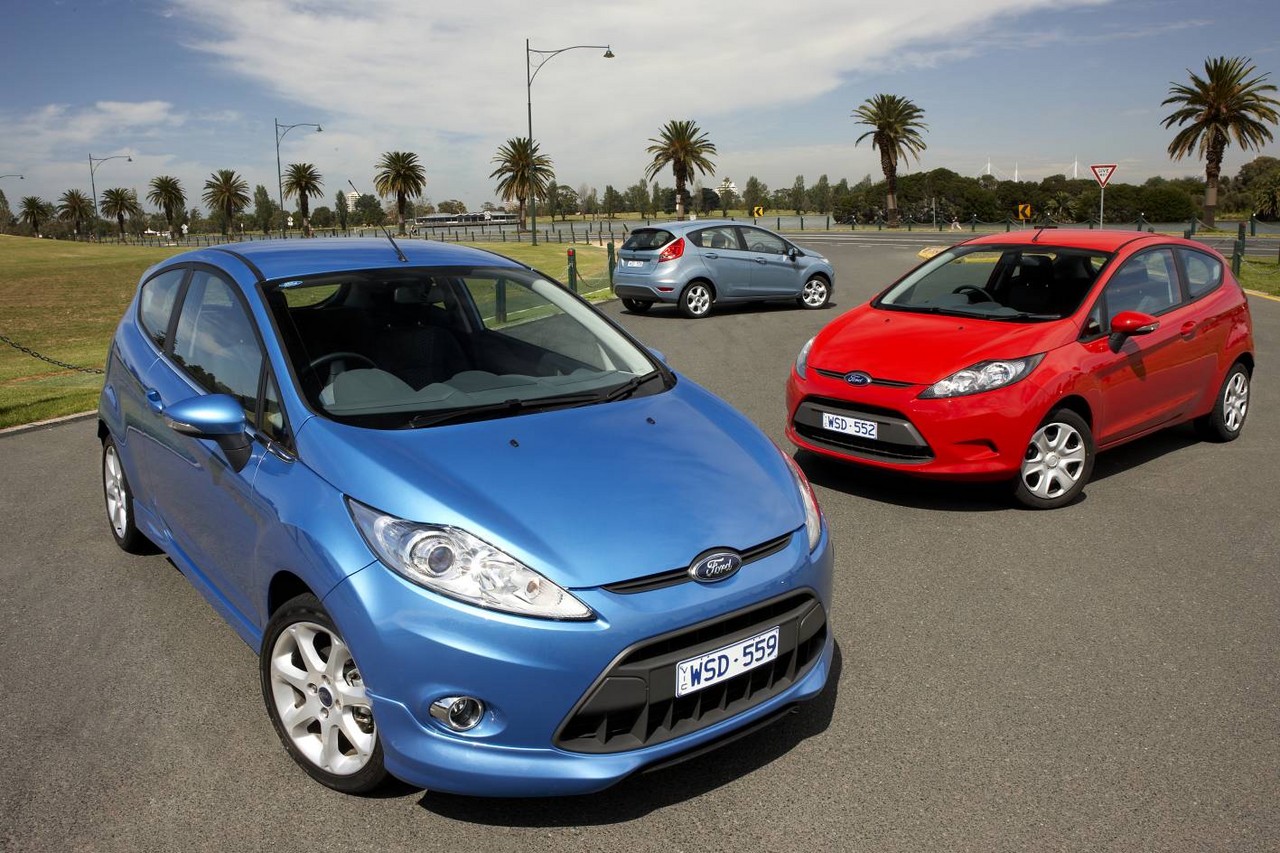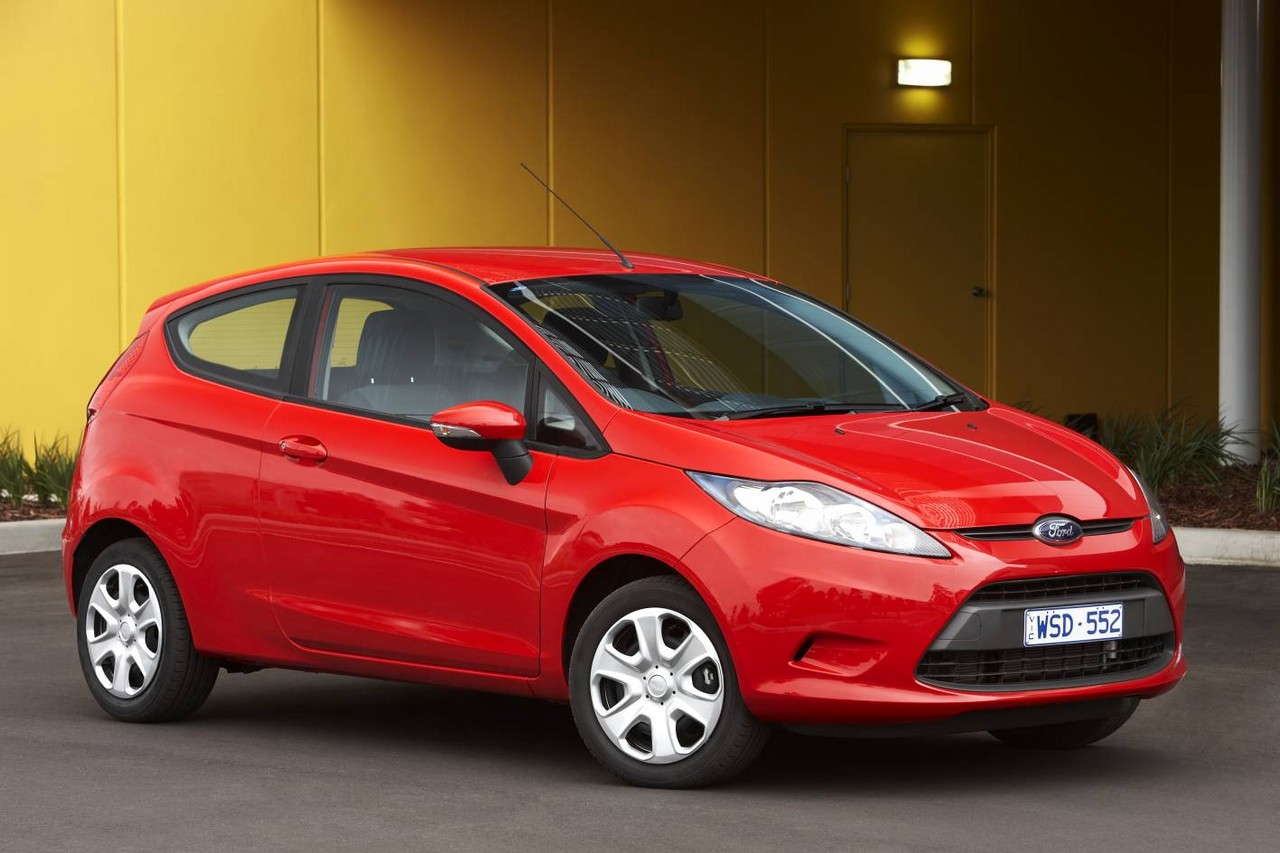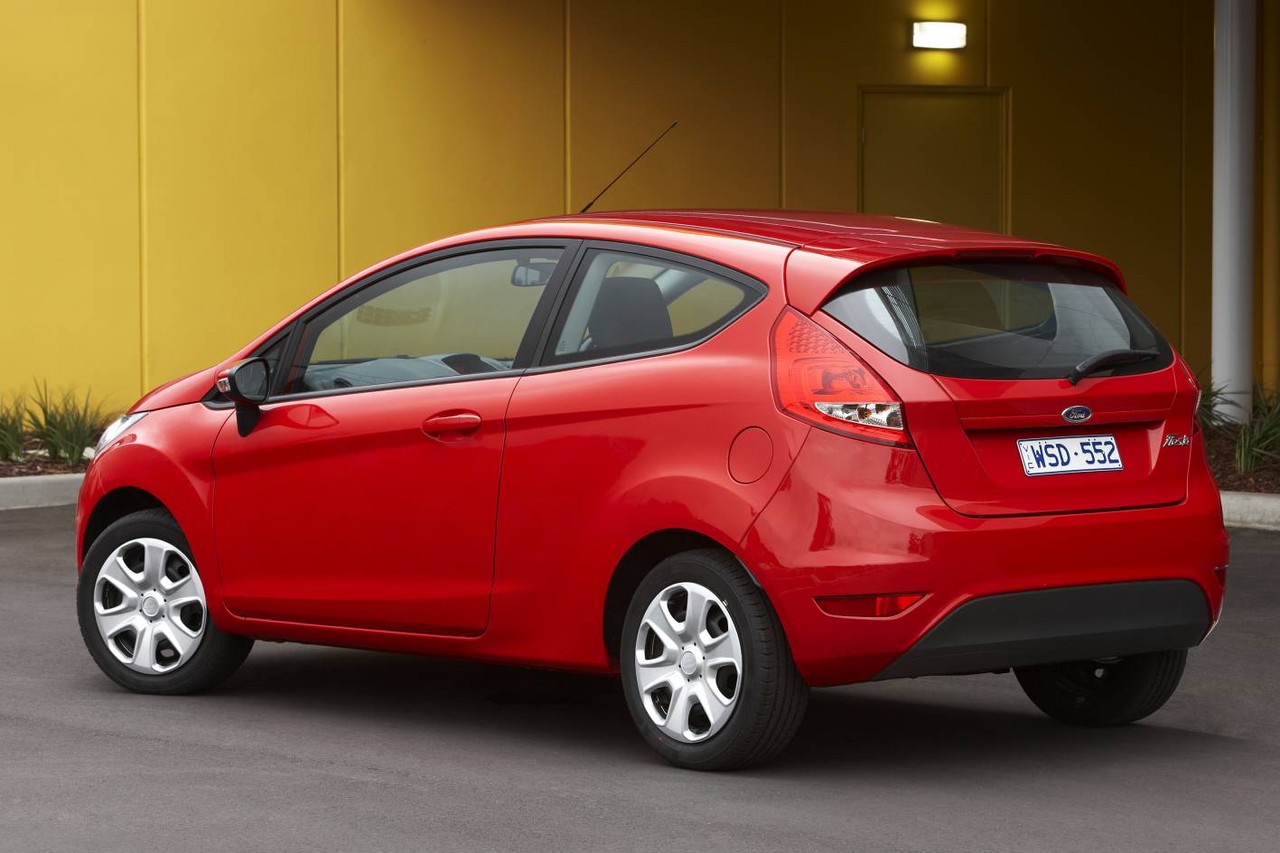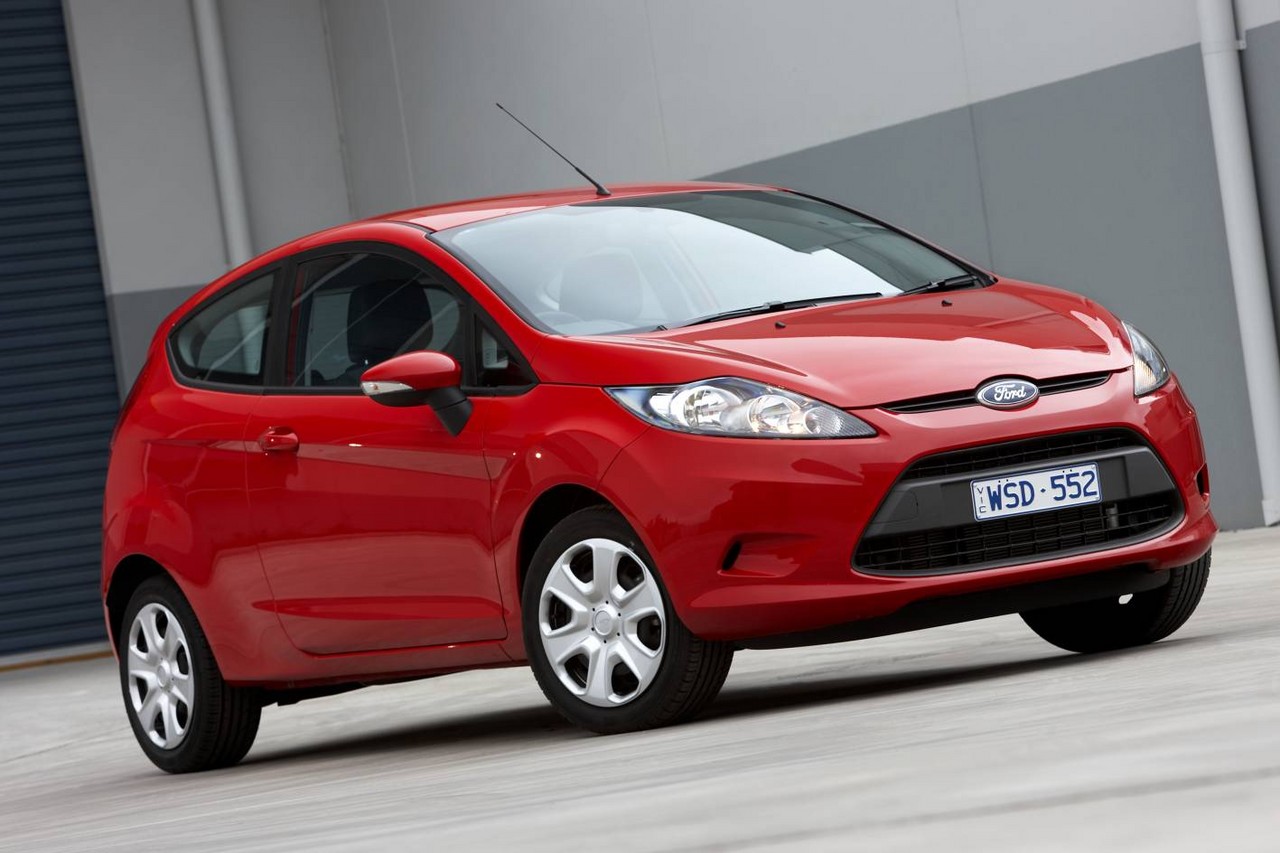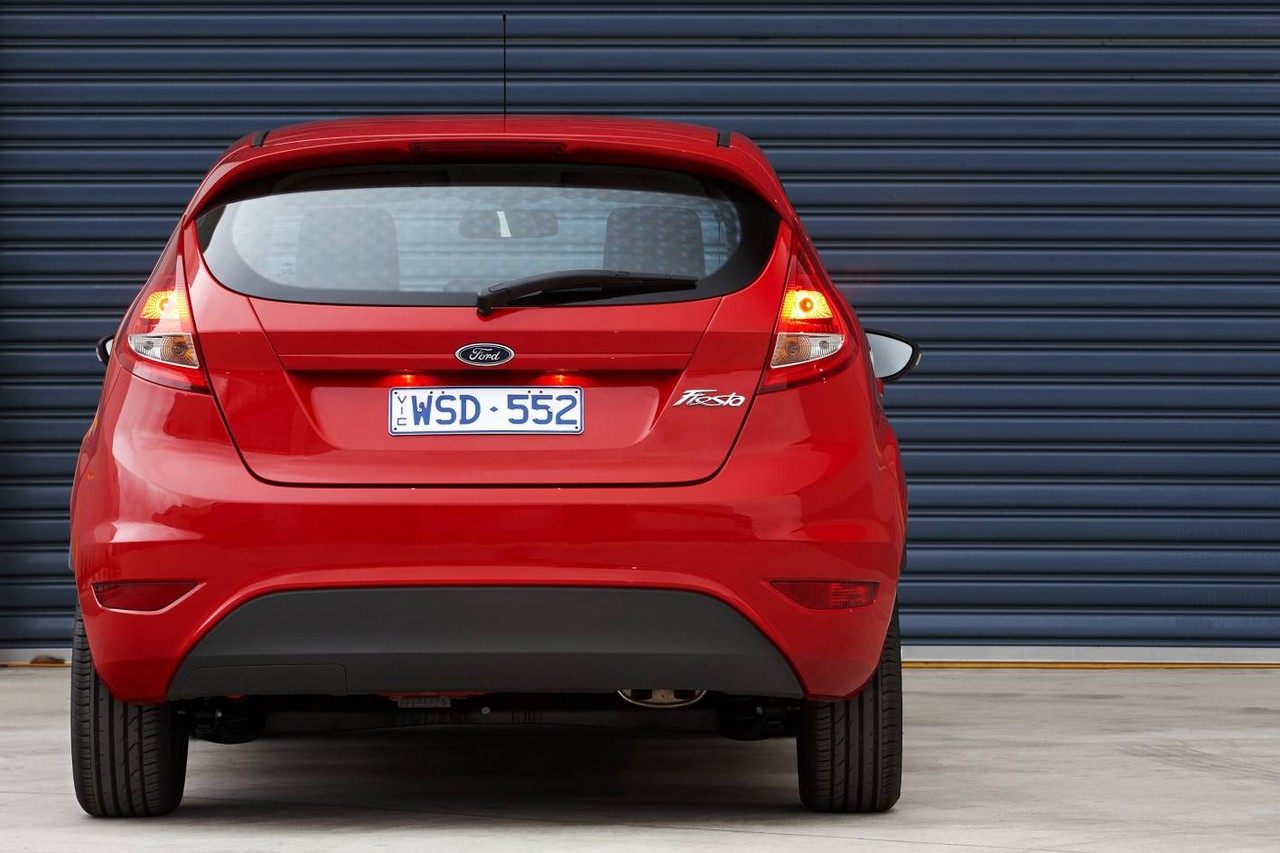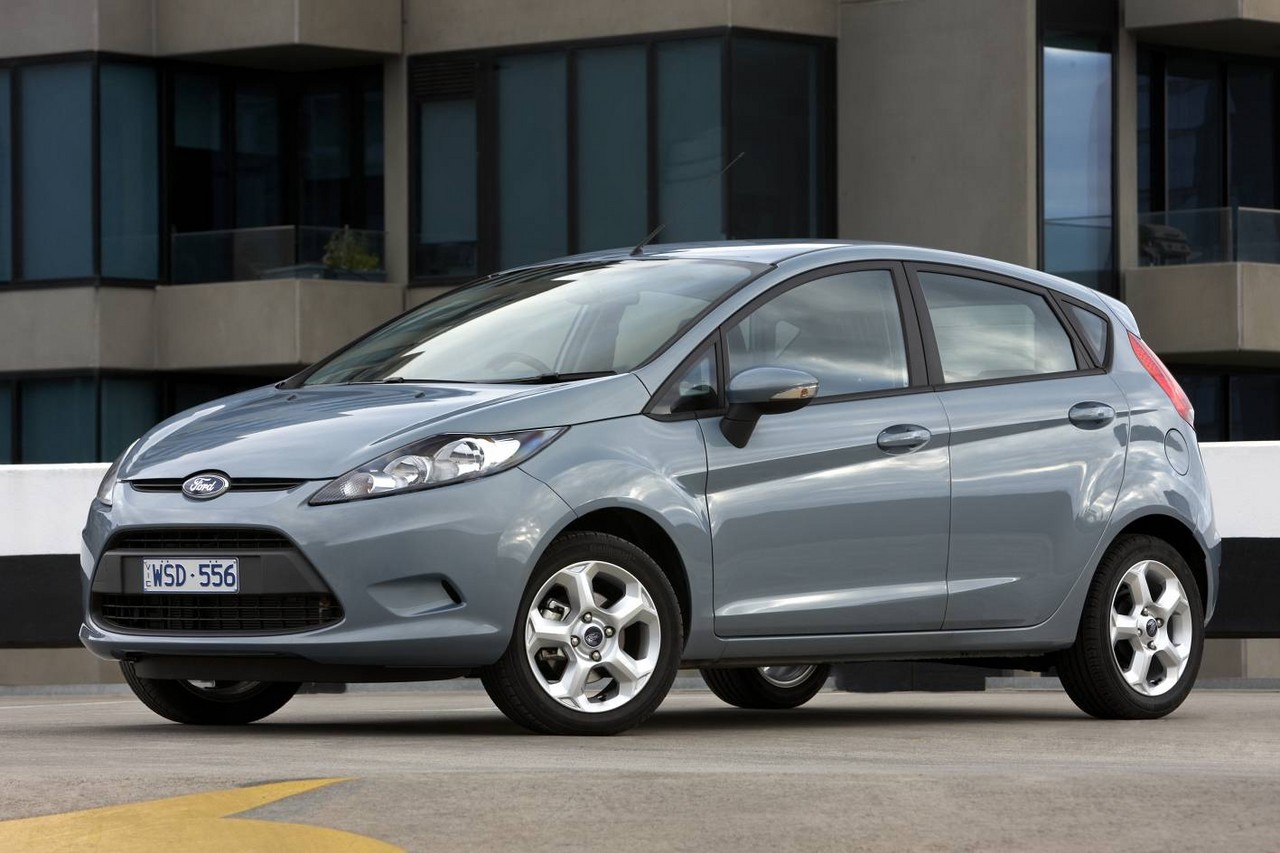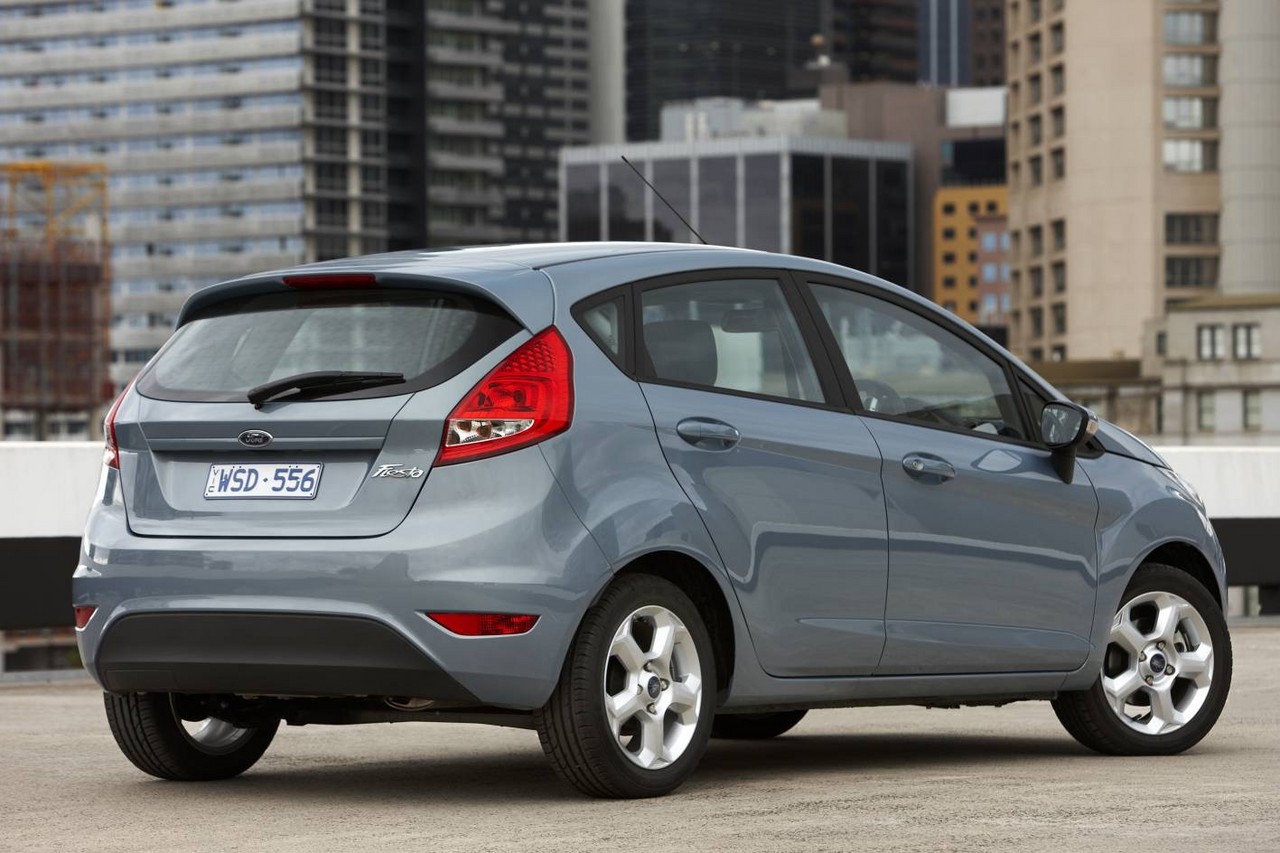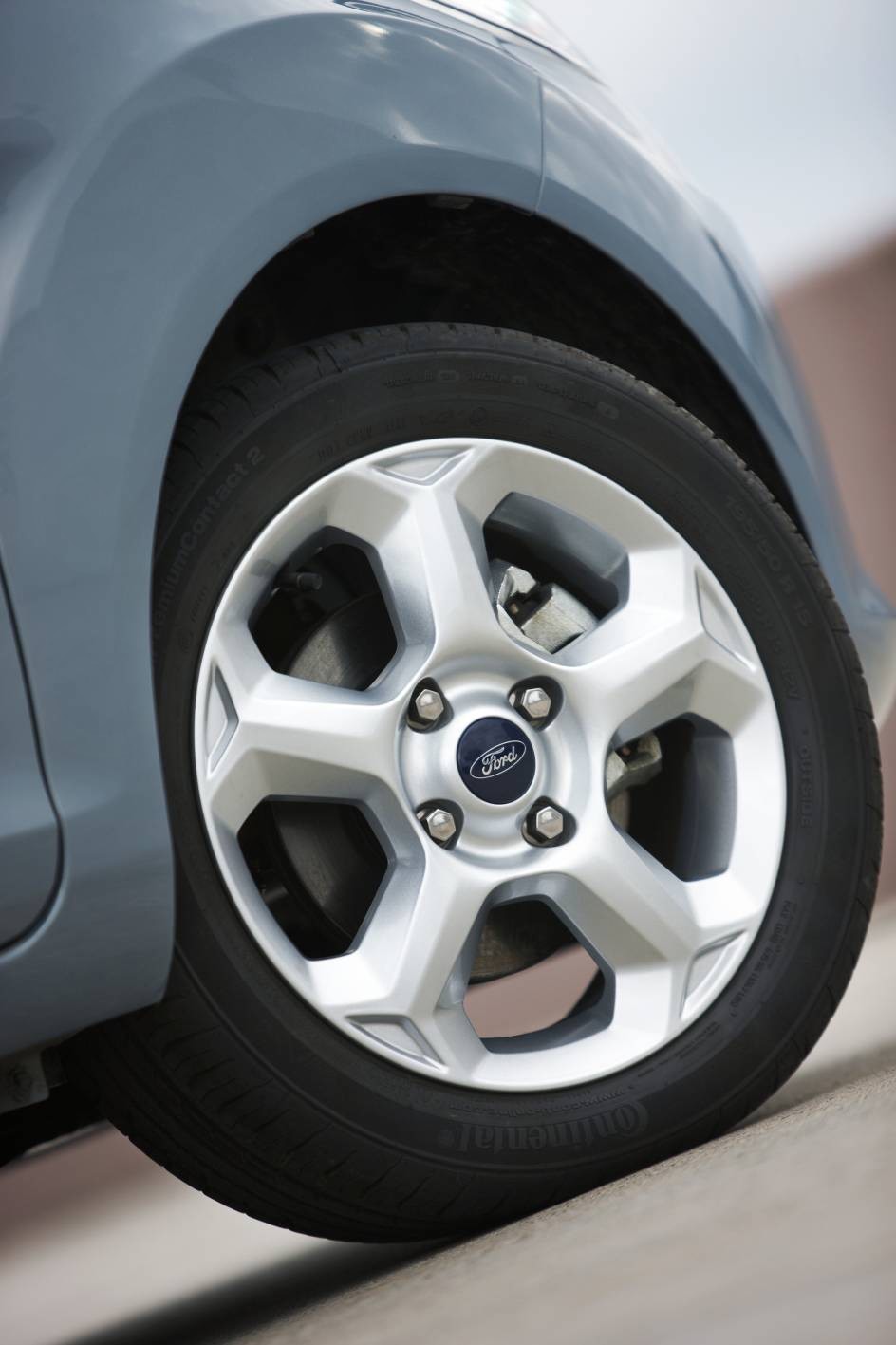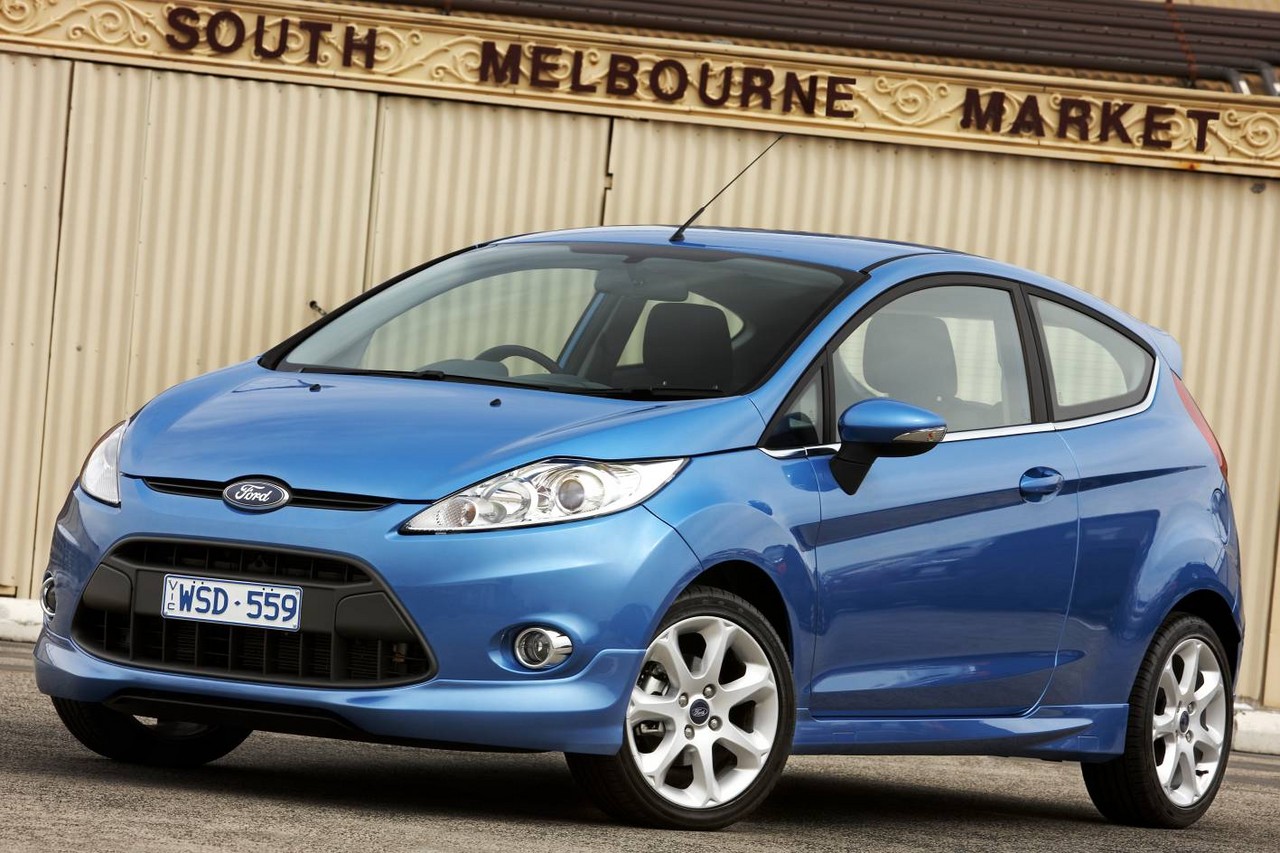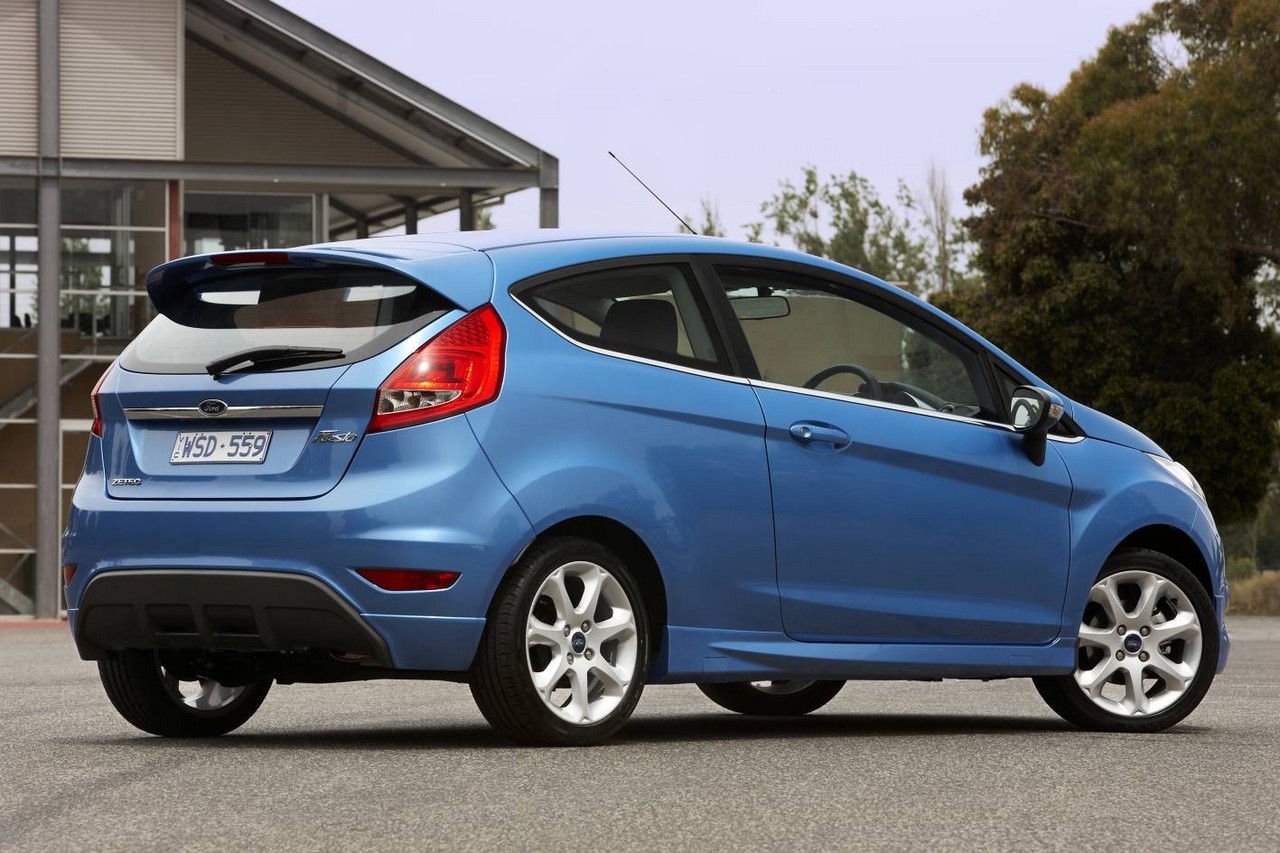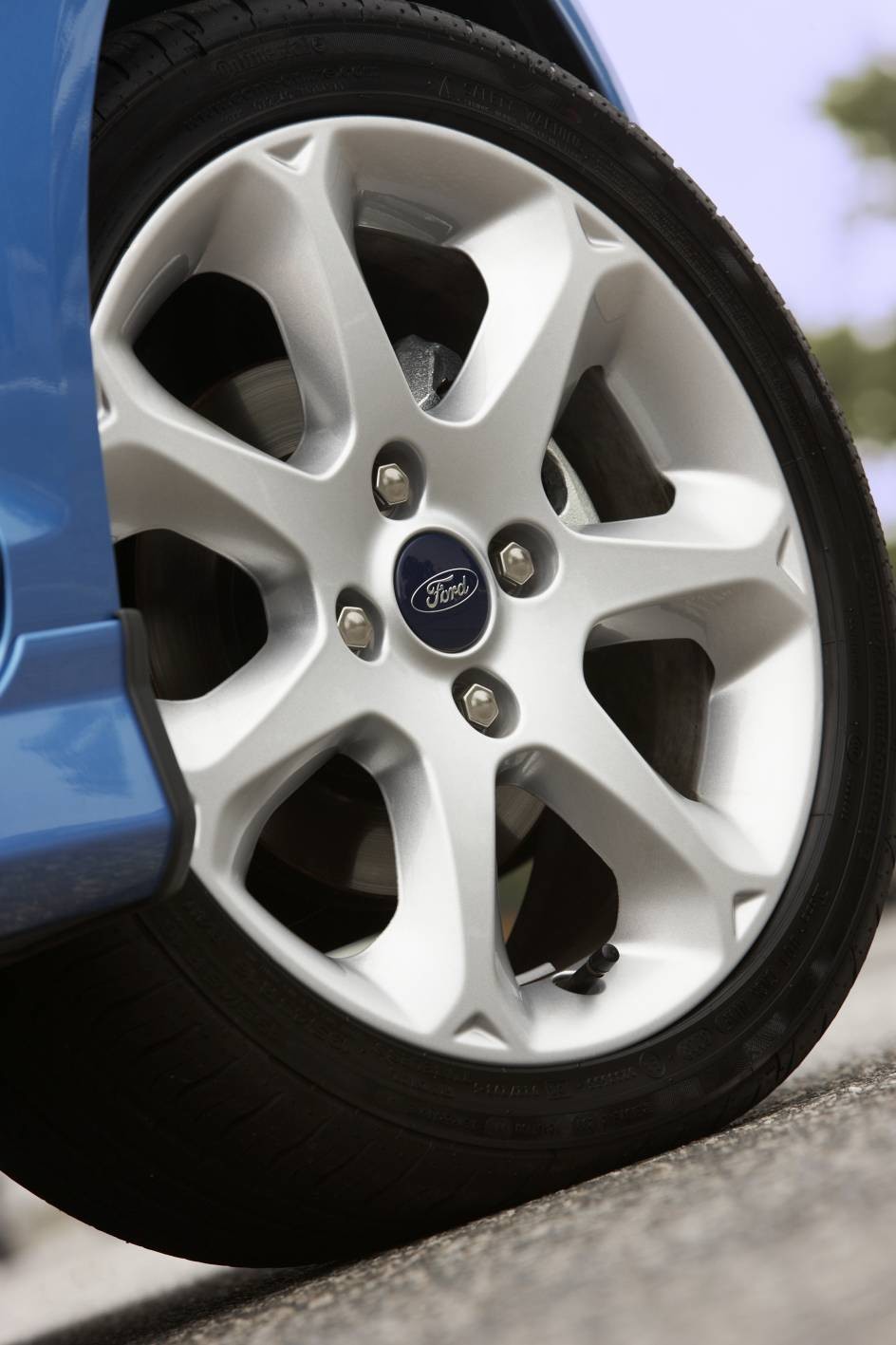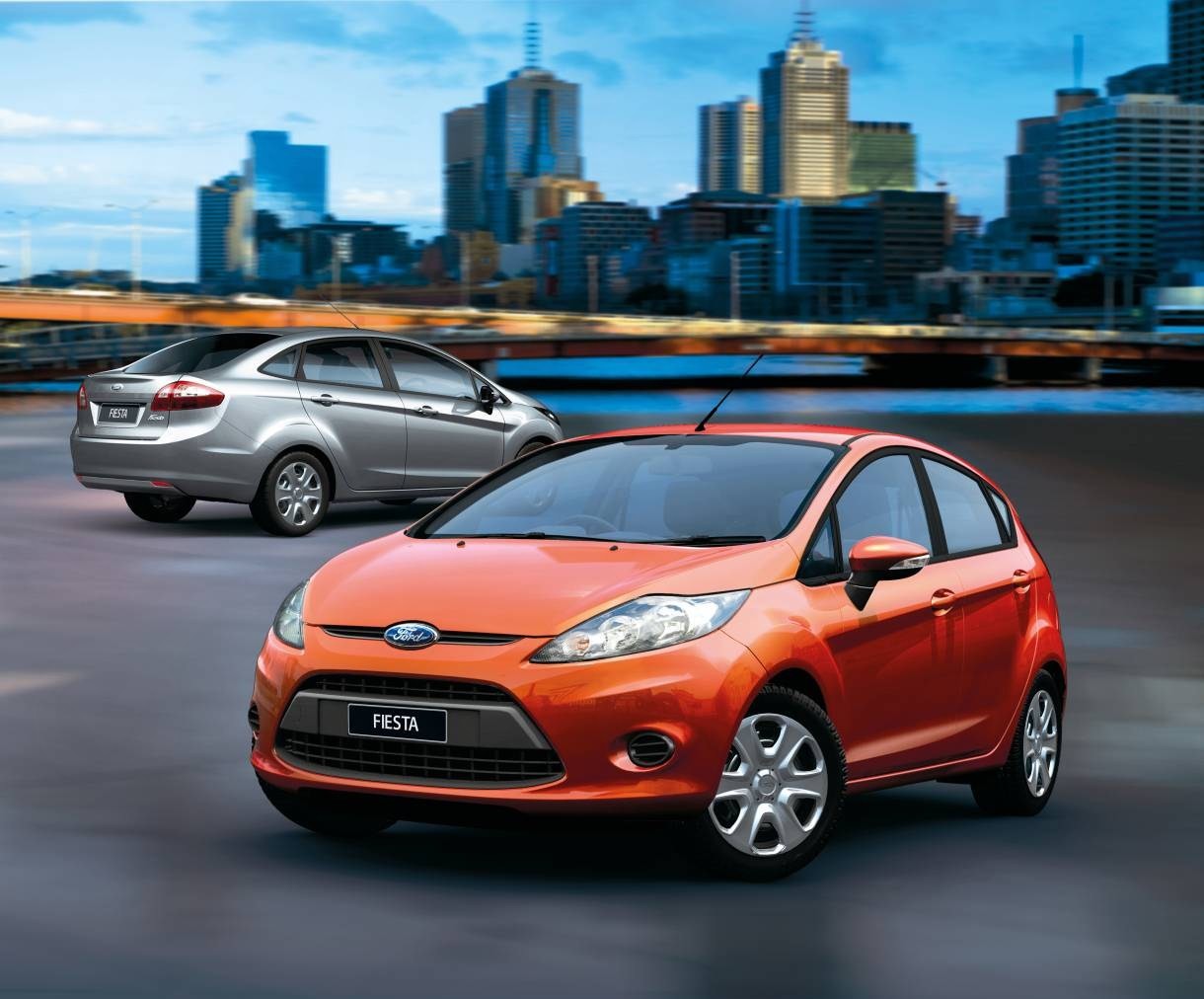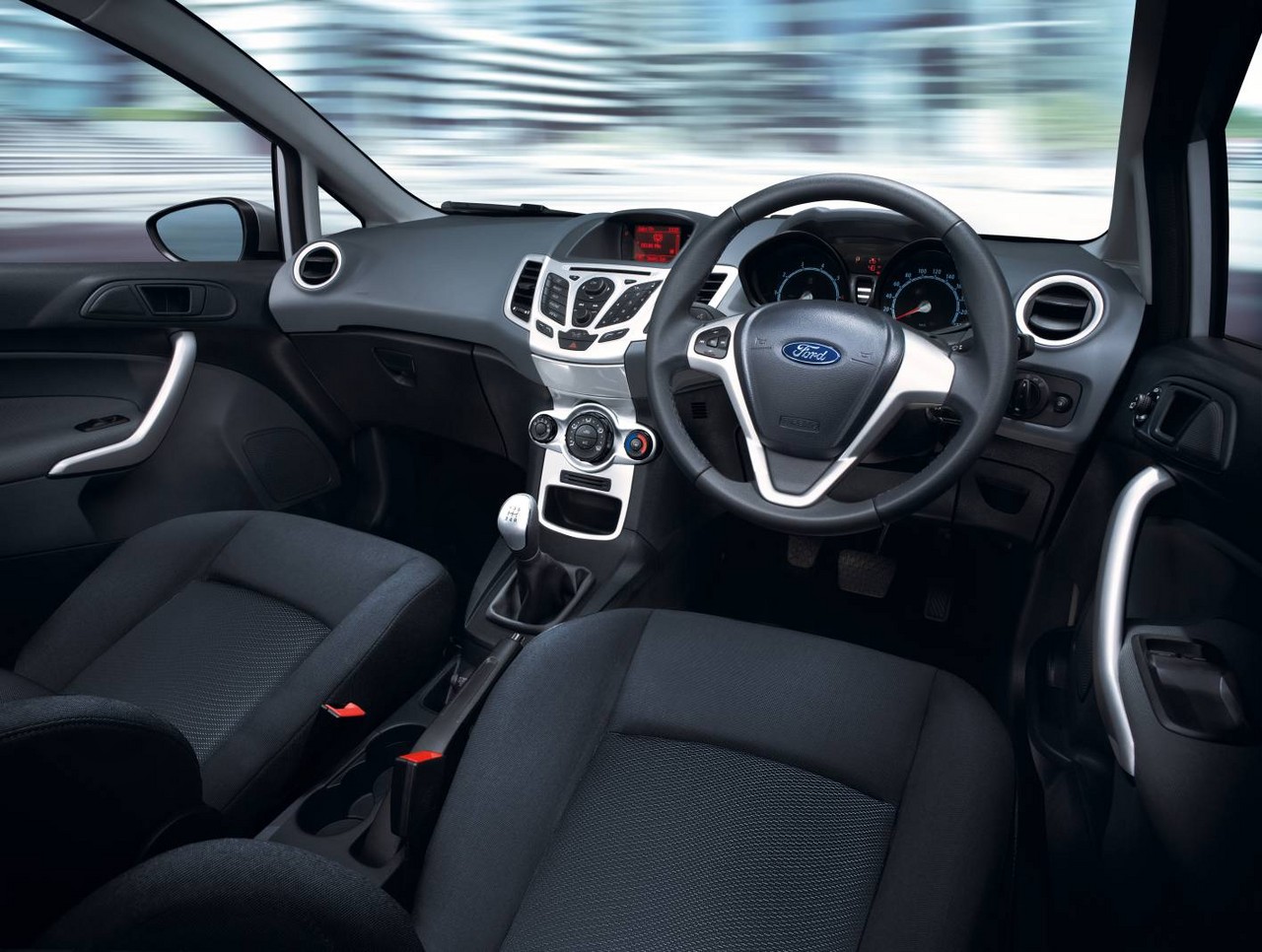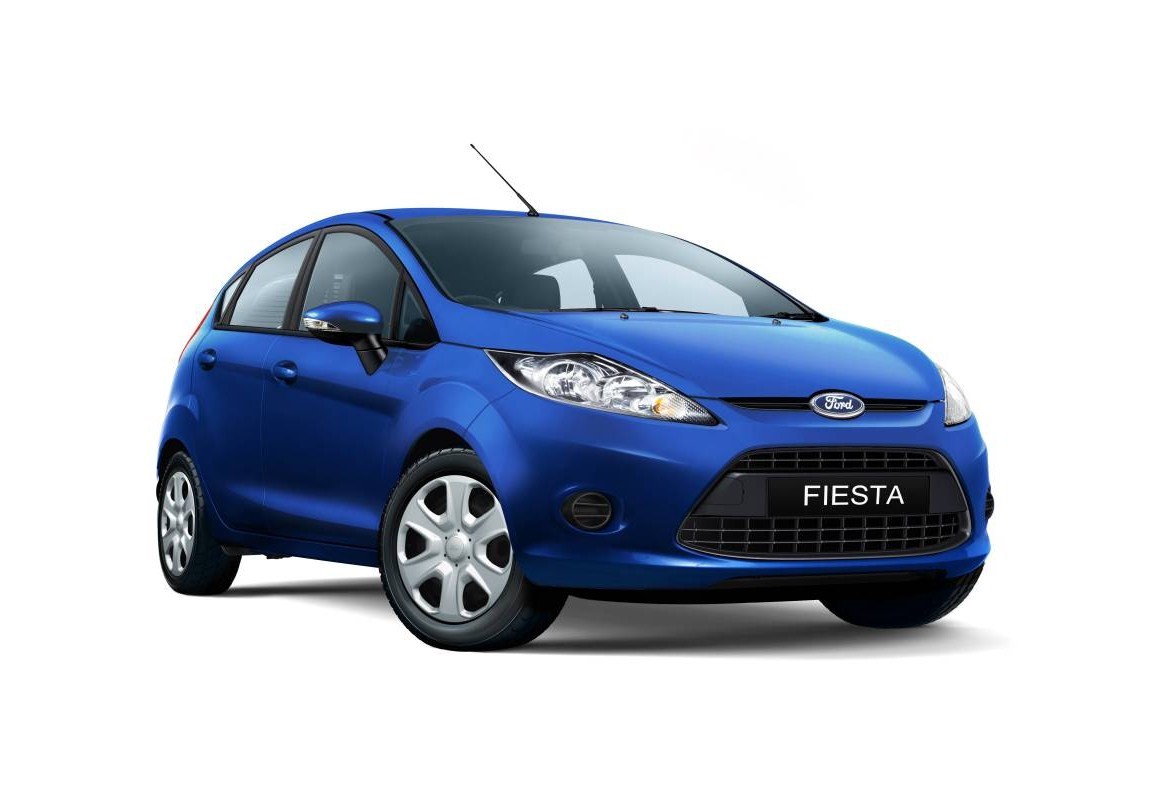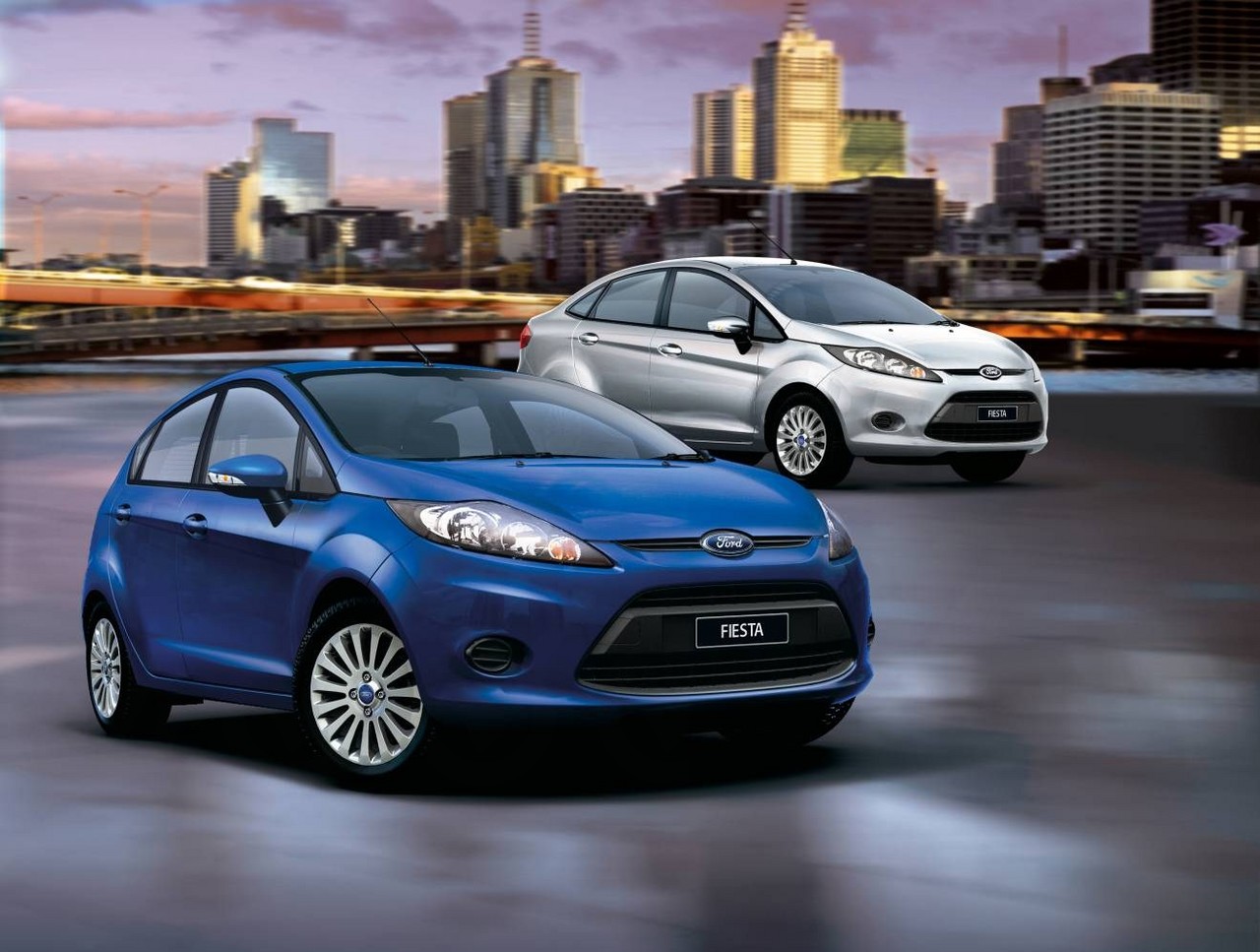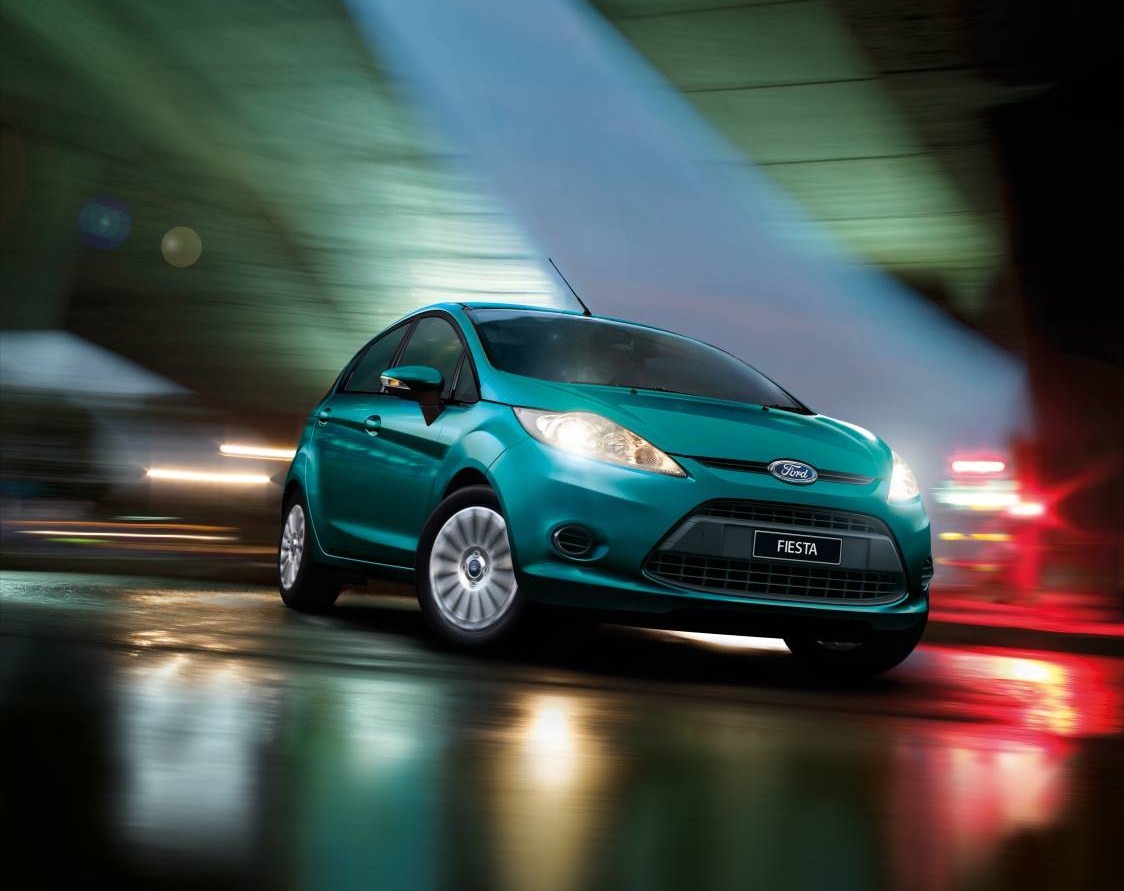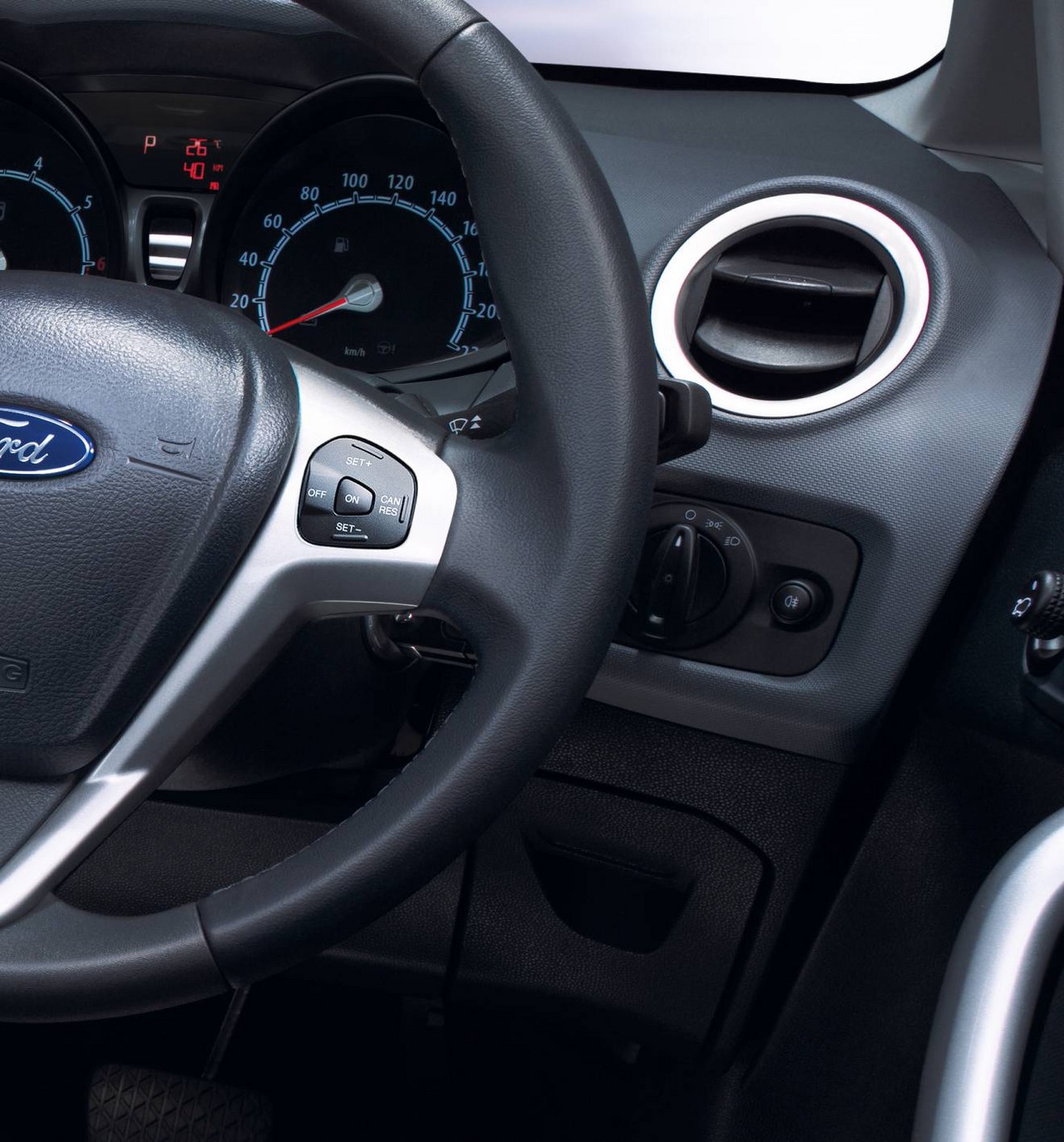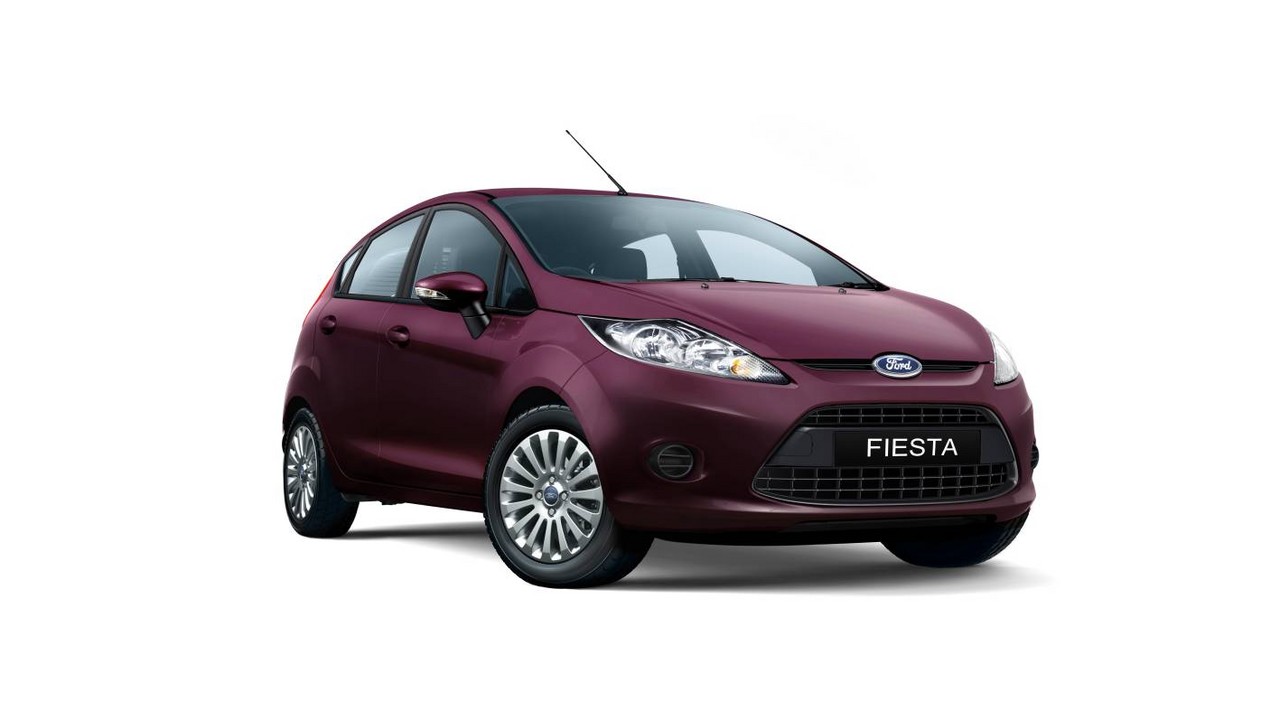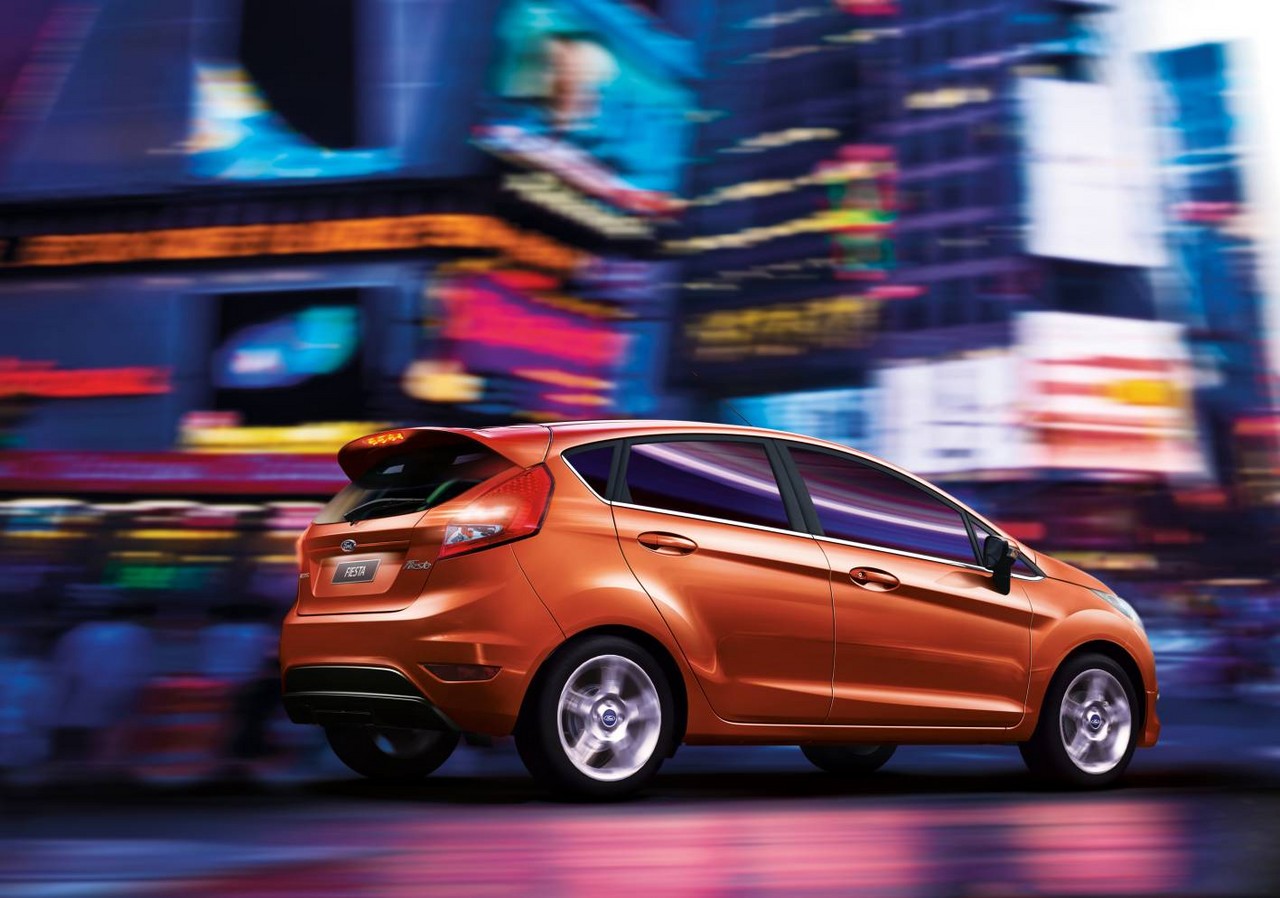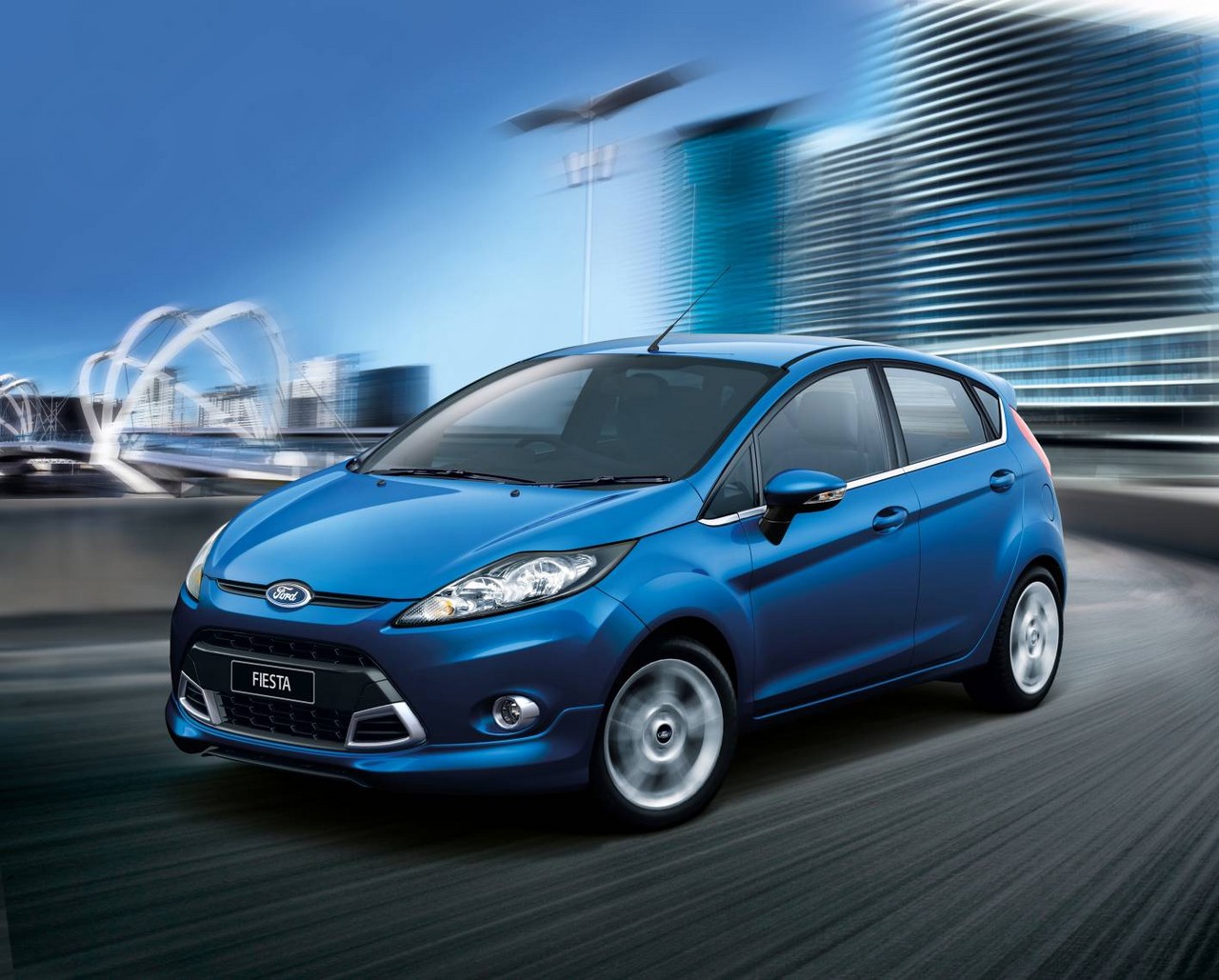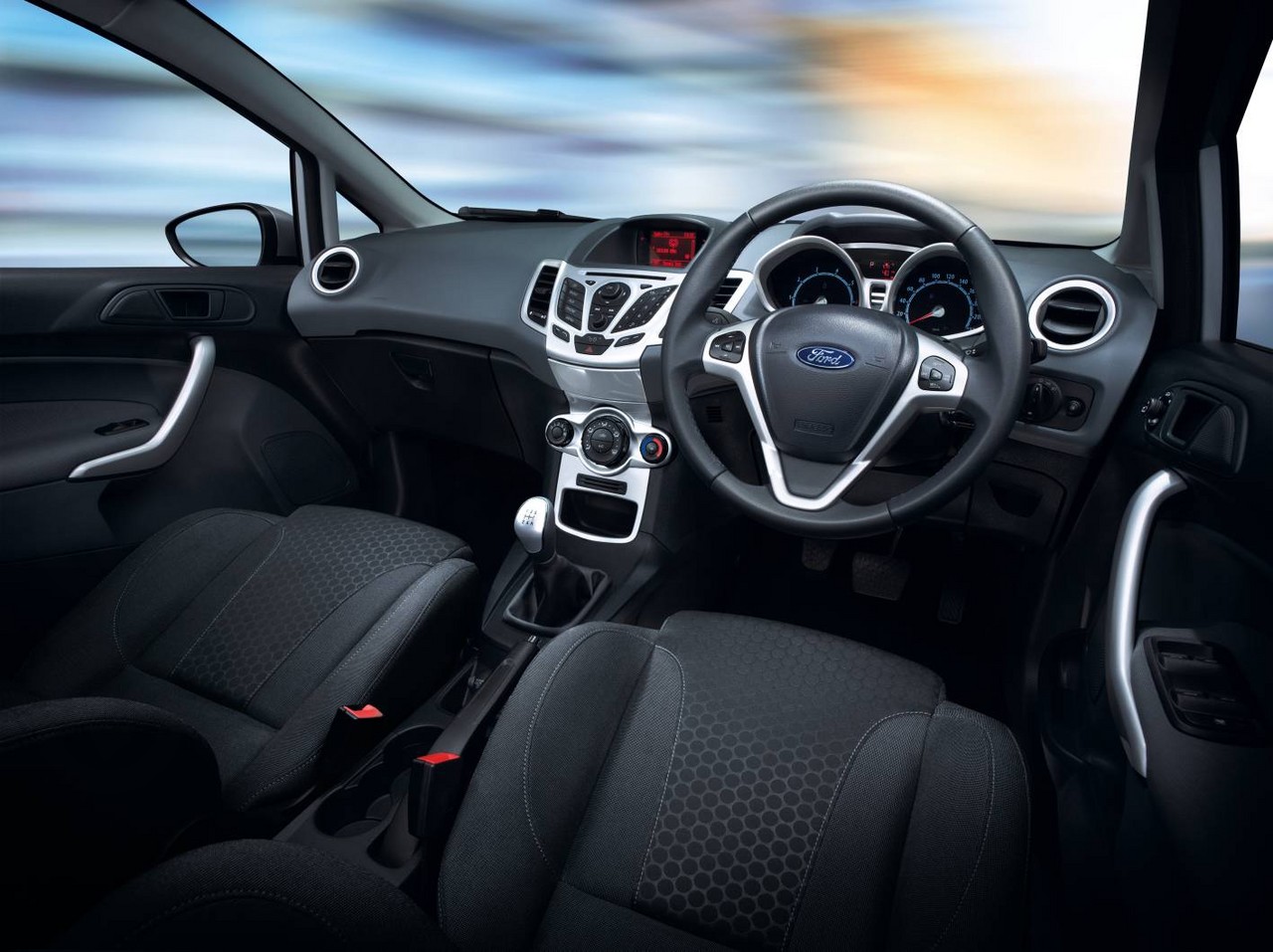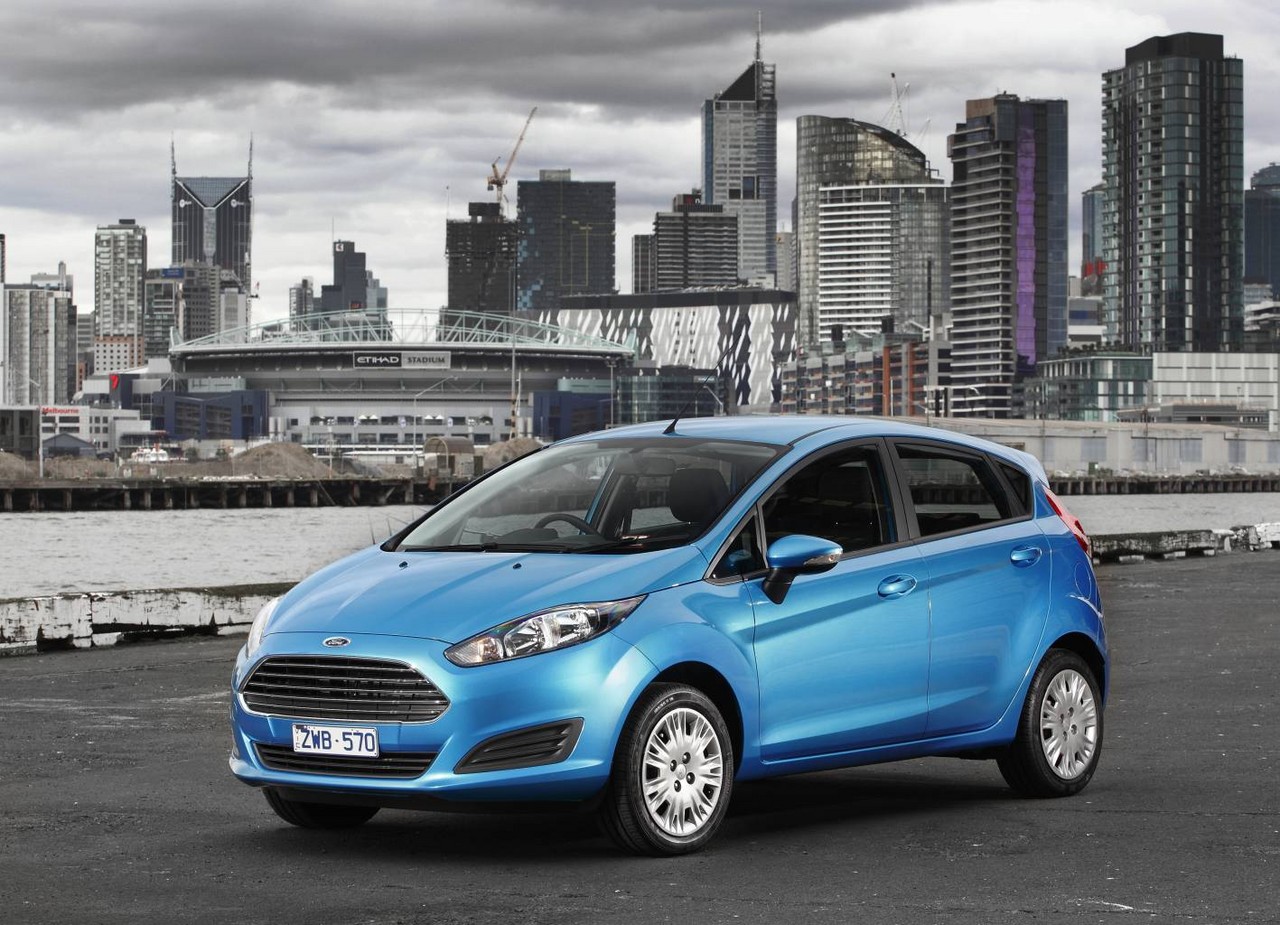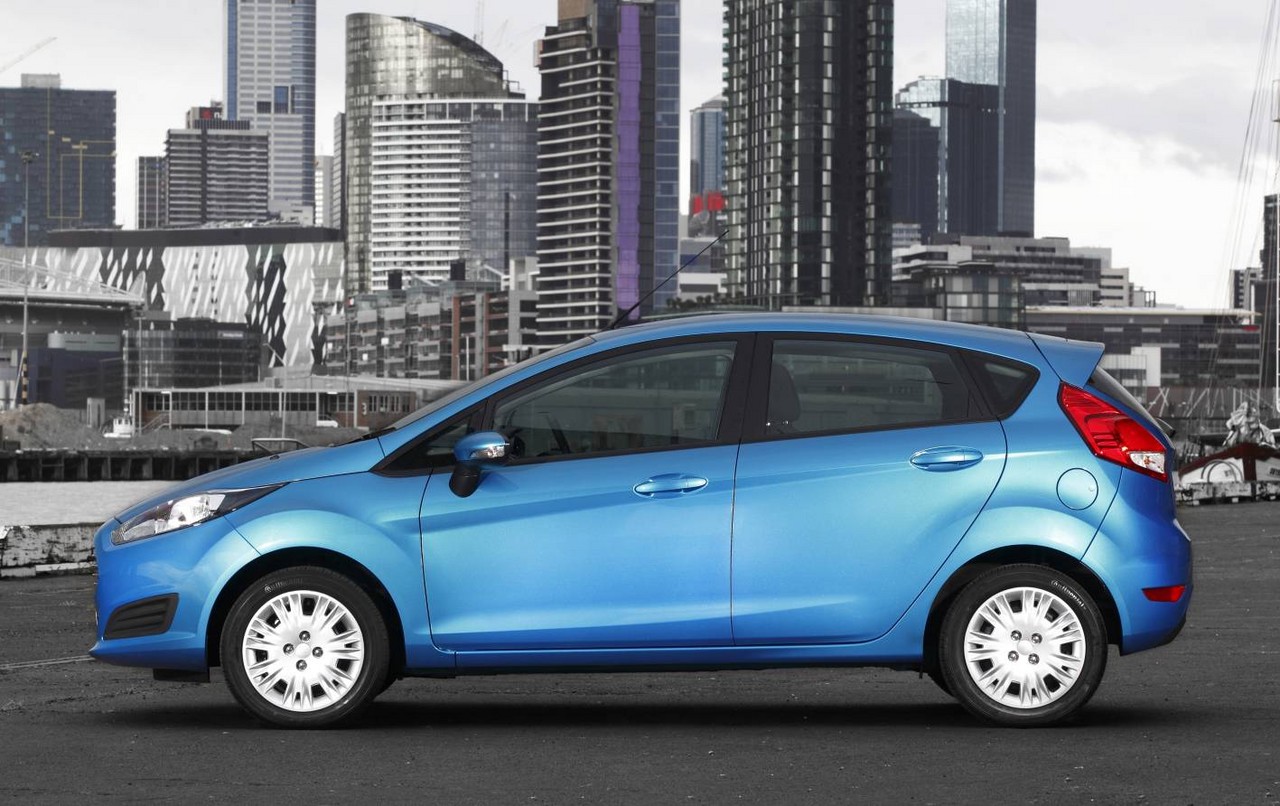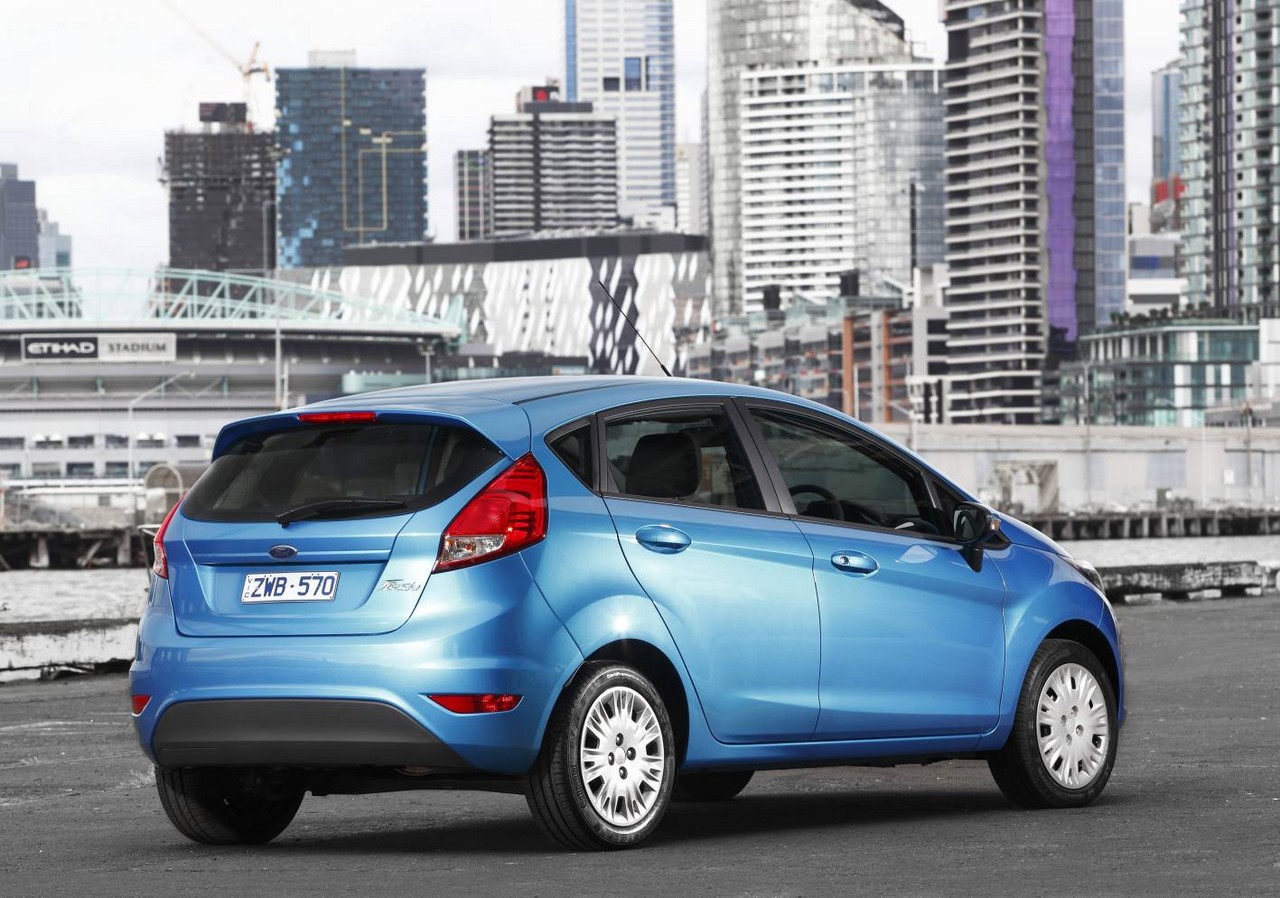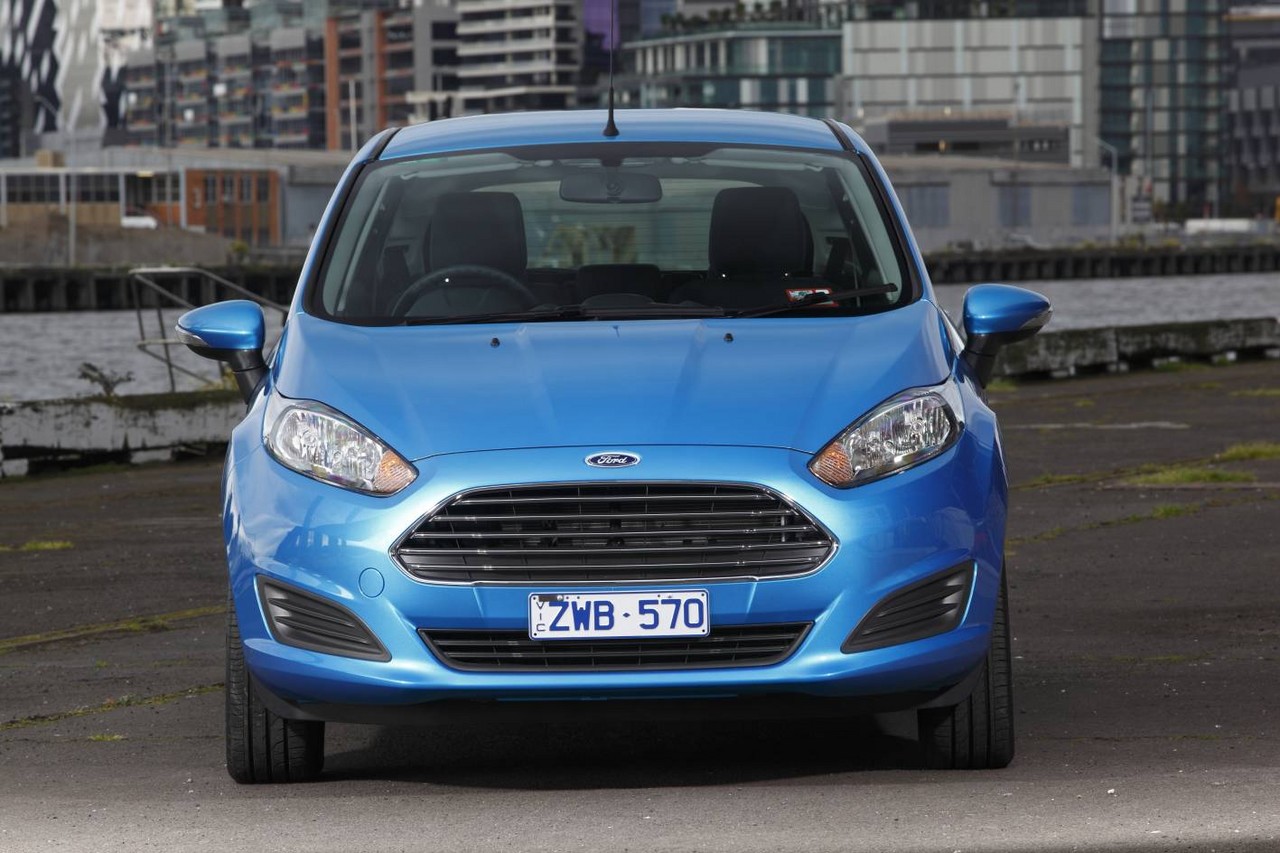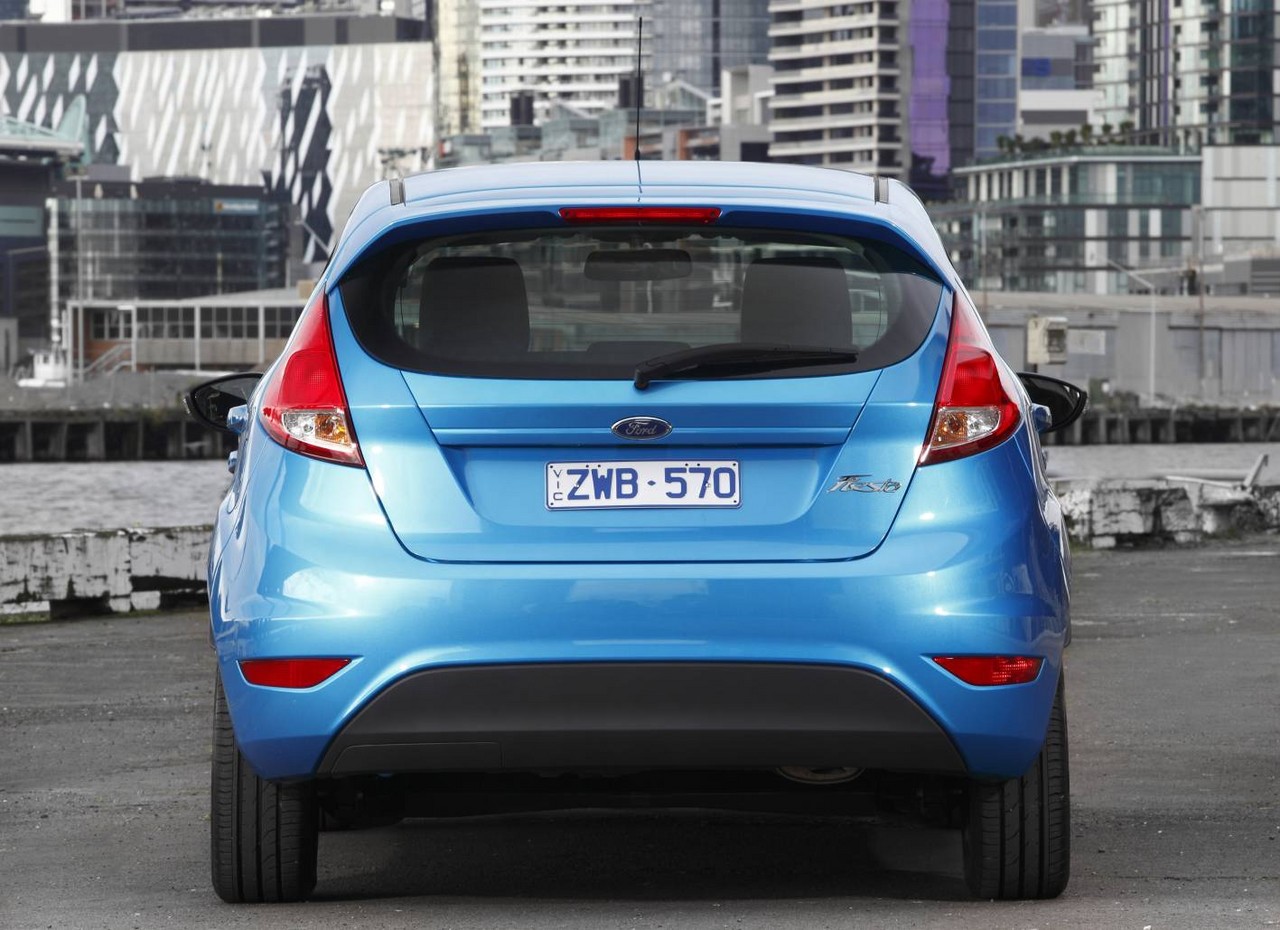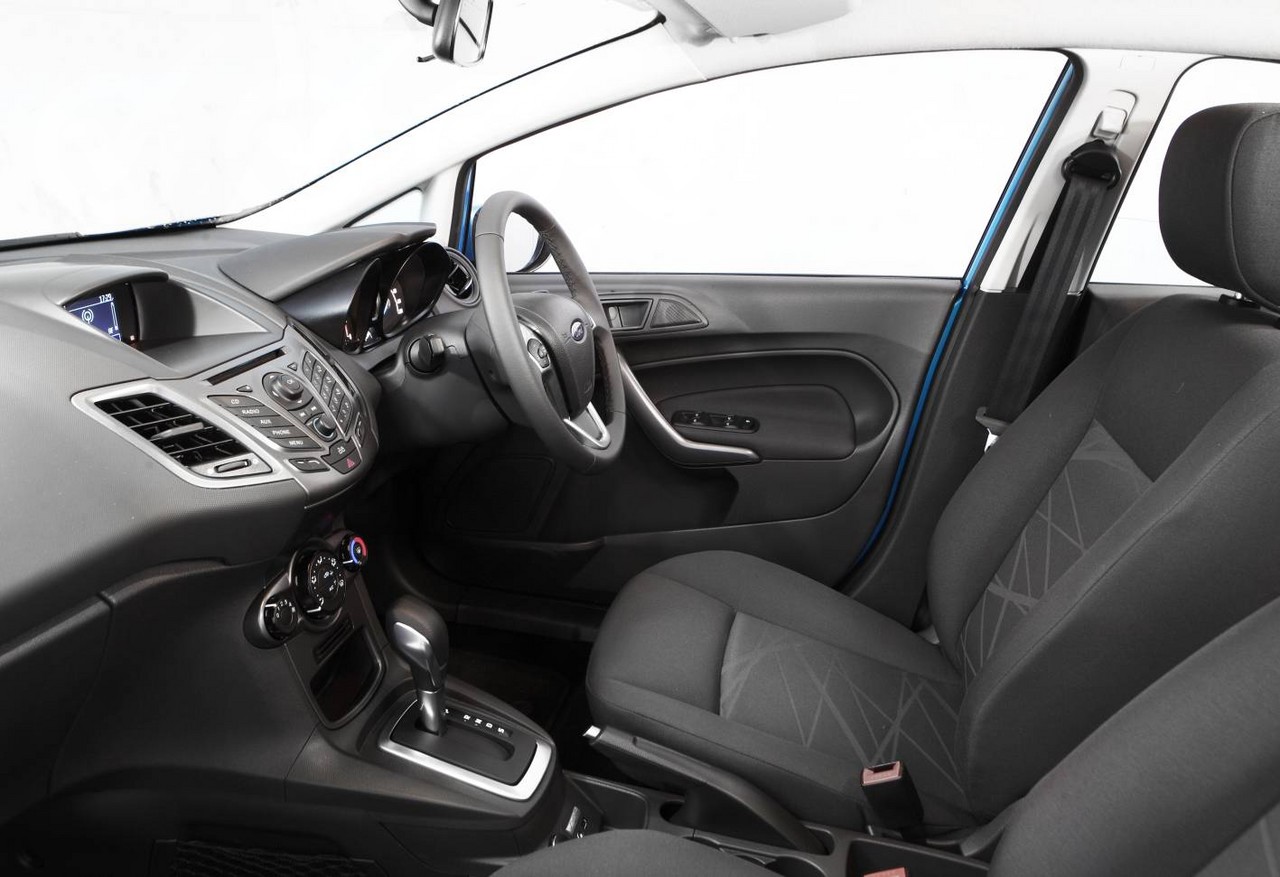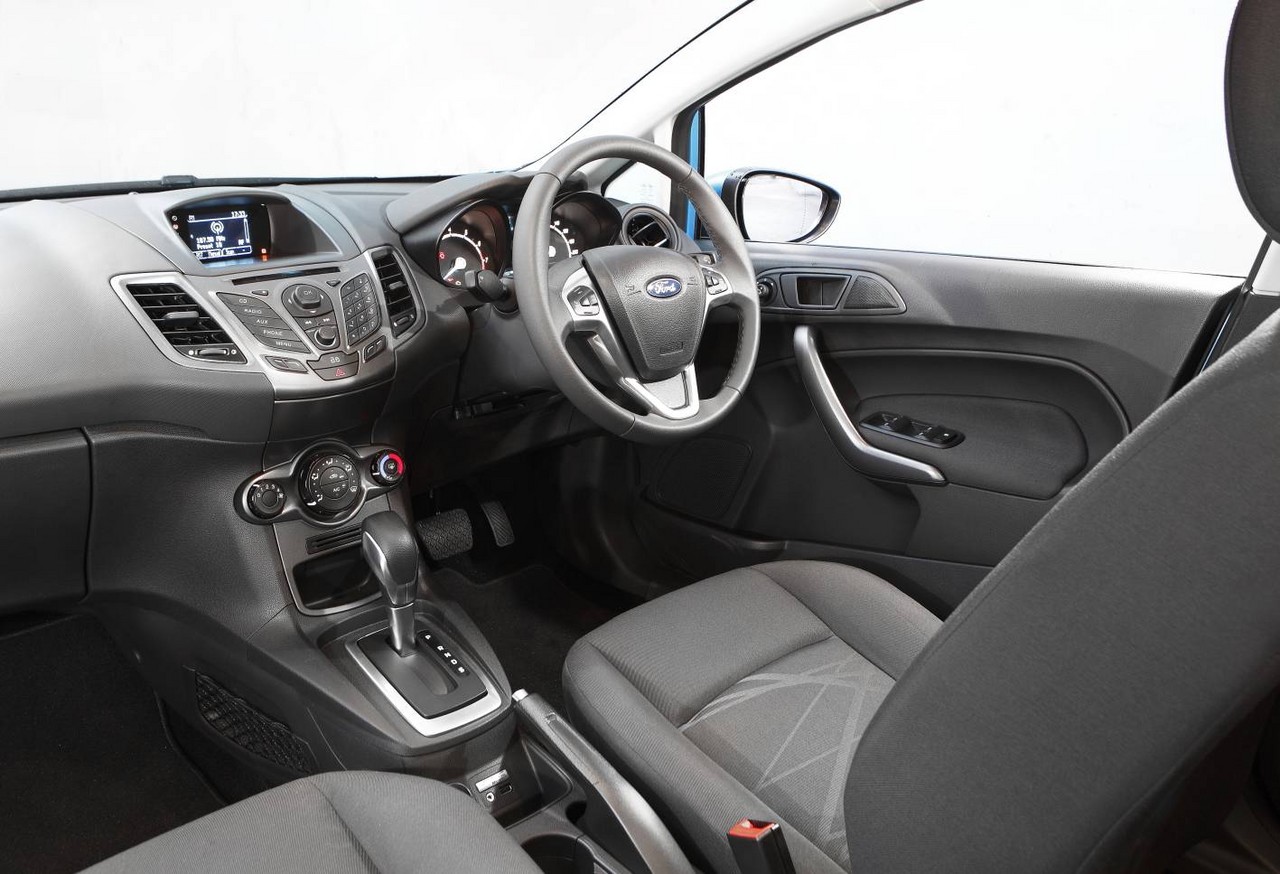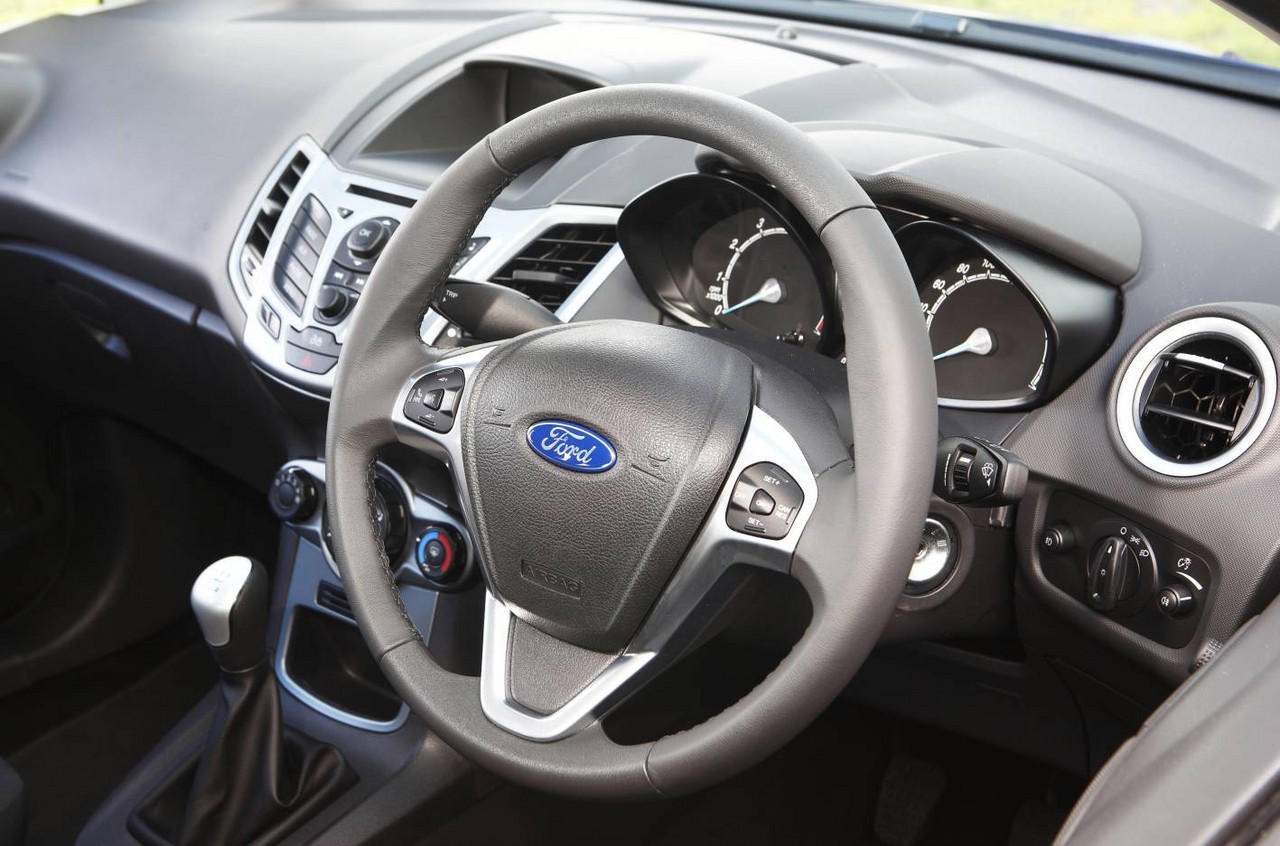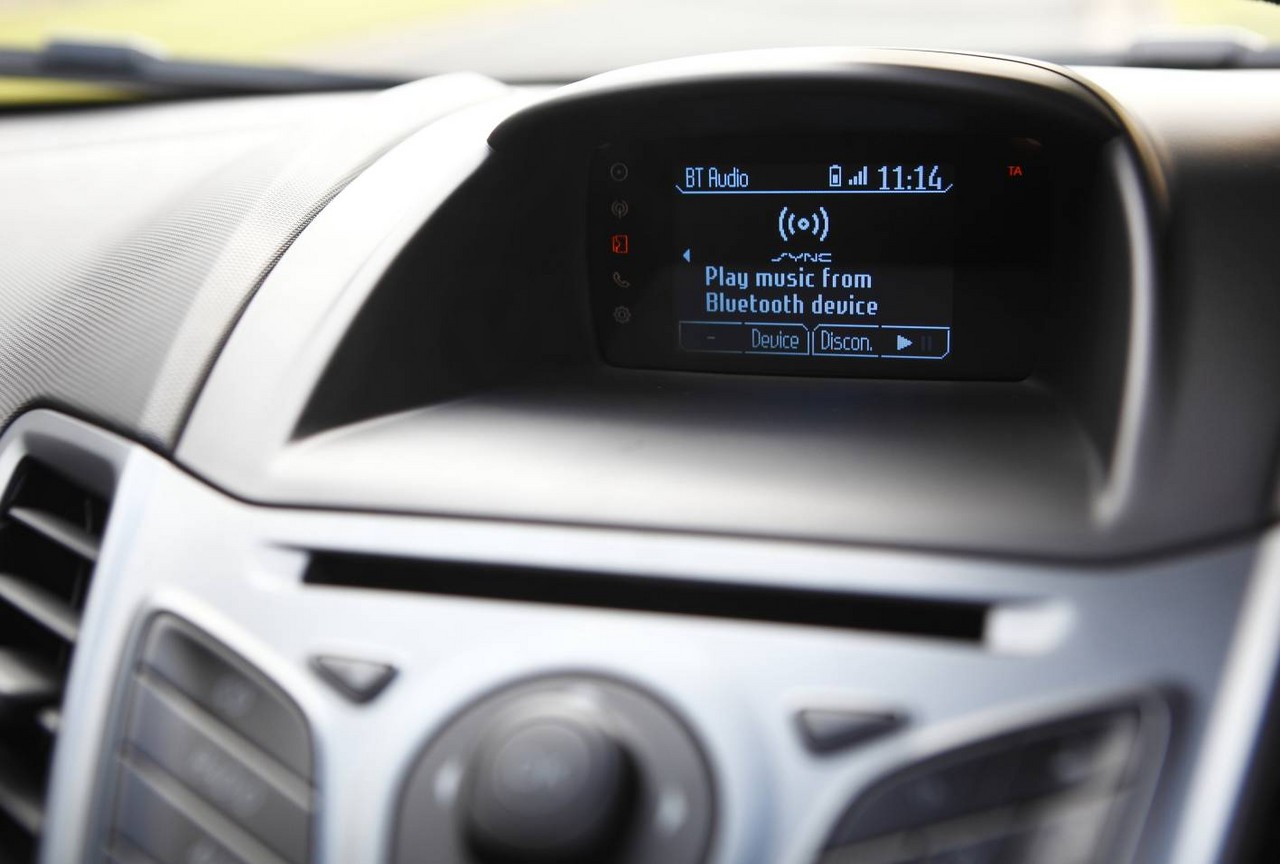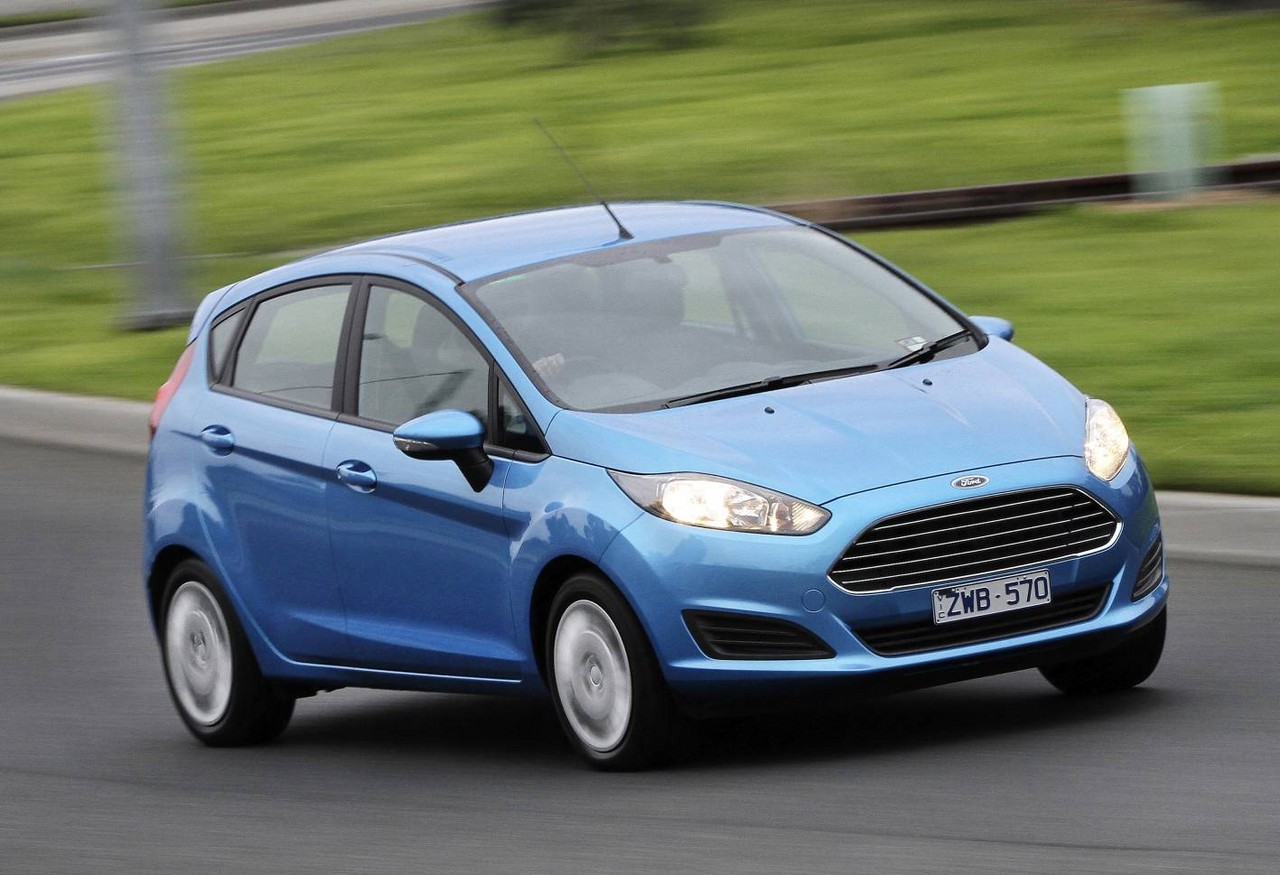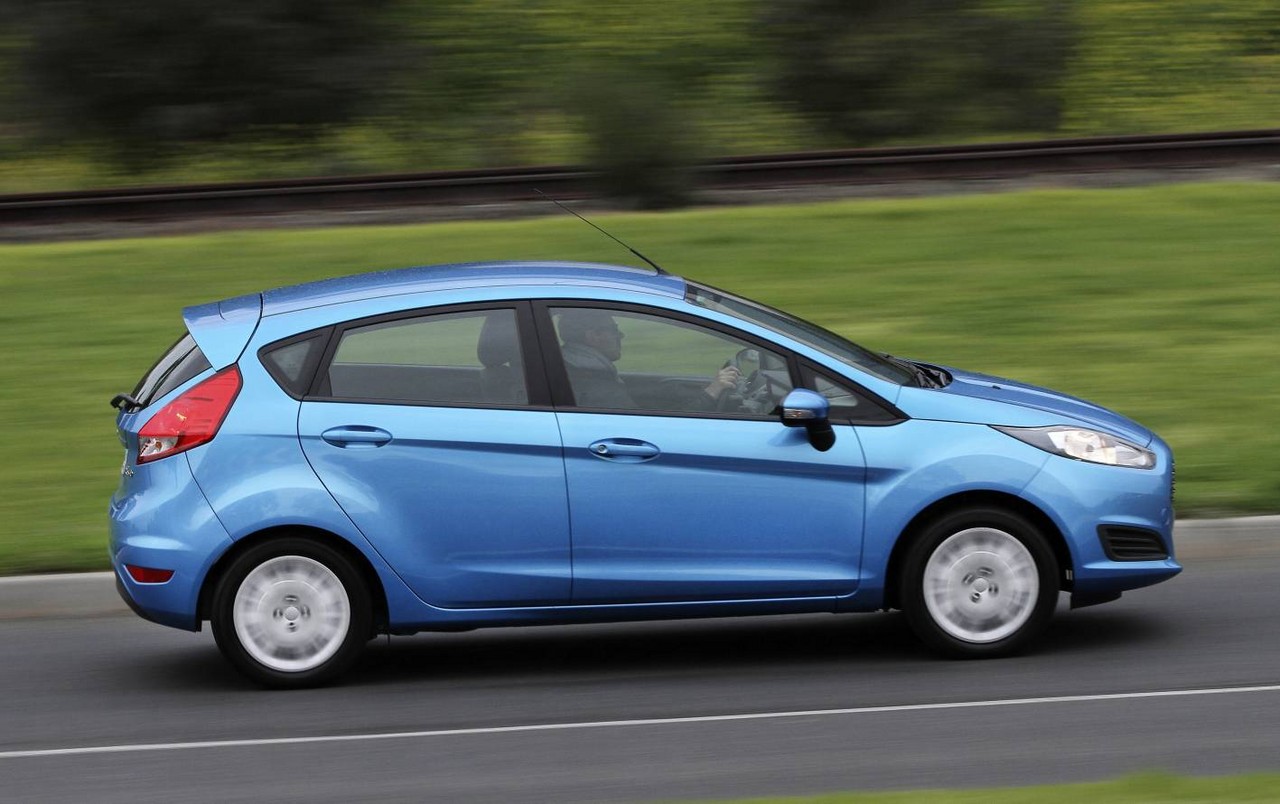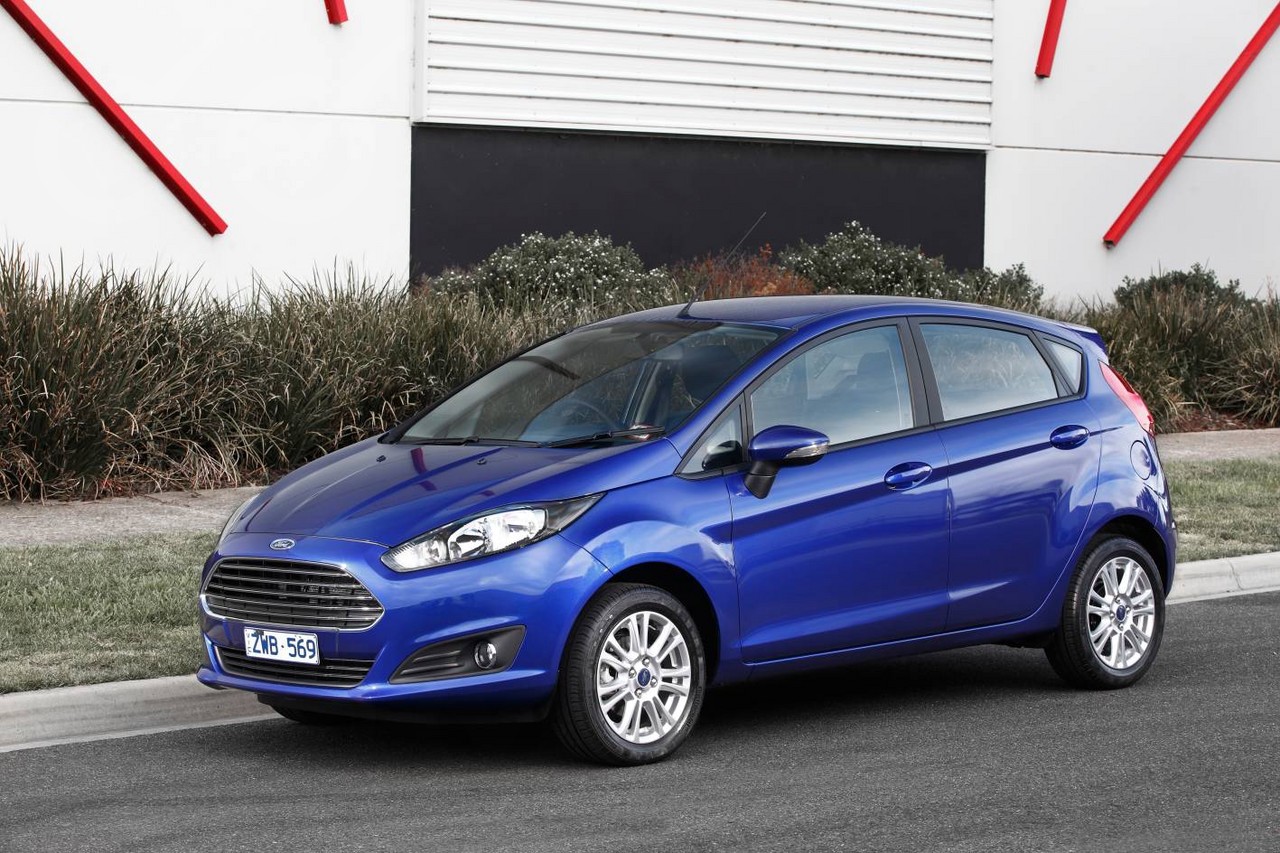
- Frugal 1.6-litre turbo-diesel engine
- Impressive ride/handling balance
- Comfortable driver’s seat
- Light, accurate steering
- Widespread problems with Powershift transmission
- Tyre noise
- Sensitive brake pedal
- Poor rear visibility
- Limited rear seat legroom and rear seats don’t fold flat (see Honda GE6/GE8 Jazz )
Review: Ford WS Fiesta (2009-12)
Overview
Released in January 2009, the Ford WS Fiesta was an all-new model available as a three- or five-door hatchback. Manufactured in Cologne, Germany, the WS Fiesta was initially available with 1.4- and 1.6-litre four-cylinder petrol engines for CL, LX and Zetec variants. In December 2009, however, the range was expanded with the ECOnetic variant which was powered by a 1.6-litre four-cylinder turbo-diesel engine. While the WS Fiesta was replaced by the Thai-built WT Fiesta in October 2010, ECOnetic variants continued to be offered until February 2012.
Duratec engines
Both the 1.4- and 1.6-litre Duratec petrol engines and aluminium cylinder heads and blocks, double overhead camshafts and four valves per cylinder. The 1.6-litre Duratec engine, however, also had variable cam timing for the intake and exhaust camshafts (Ford’s twin independent variable cam timing, or ‘Ti-VCT’).
Platform and dimensions
The Mk.6 Fiesta was based on Ford’s global B-car platform which also underpinned the Mazda DE Mazda2 . Compared to the Mk.5 Fiesta , the Mk.6 Fiesta was 26 mm longer (at 3950 mm), 37 mm wider (1722 mm), 13 mm higher (1481 mm) and had a 3 mm longer wheelbase (2489 mm). Furthermore, the increased use of high-strength steels contributed to a 10 per cent increase in torsional rigidity and a mass reduction of 40 kg. The lighter bodyshell also enabled the use of additional sound-deadening material for greater refinement, supplemented by double door seals, fully encapsulated glass and a secondary bulkhead barrier.
Suspension and steering
The Mk.6 Fiesta had MacPherson strut front suspension with twin tube shock absorbers and twist-beam rear suspension with monotube shock absorbers; the Fiesta was also fitted with a new electric power-assisted rack and pinion steering system.
| Body | Engine | Variant | Trans. | Years | Peak power | Peak torque |
|---|---|---|---|---|---|---|
| 3dr hatch |
1.4-litre petrol I4 |
CL | 5sp man. | 2009-10 | 71 kW at 5750 rpm | 128 Nm at 4200 rpm |
| 1.6-litre petrol I4 |
CL | 4sp auto | 2009-10 | 88 kW at 6000 rpm | 152 Nm at 4050 rpm | |
| Zetec | 5sp man. | |||||
| 1.6-litre petrol I4 |
Metal | 5sp man. | 2012 | 99 kW at 6700 rpm | 160 Nm at 4250 rpm | |
| 5dr hatch |
1.4-litre petrol I4 |
CL, LX |
5sp man. | 2009-10 | 71 kW at 5750 rpm | 128 Nm at 4200 rpm |
| Zetec | 4sp auto | |||||
| 1.6-litre petrol I4 |
CL, LX |
4sp auto | 2009-10 | 88 kW at 6000 rpm | 152 Nm at 4050 rpm | |
| Zetec | 5sp man. | |||||
| 1.6-litre turbo-diesel I4 | ECOnetic | 5sp man. | 2009-12 | 66 kW at 4000 rpm | 200 Nm at 1750 rpm |
Safety equipment
Standard safety equipment for the WS Fiesta included dual front airbags, ABS, electronic brake force distribution and front seatbelts with pretensioners and load limiters. The Zetec and ECOnetic were also equipped with front seat-mounted side airbags (with chest and head protection), a driver’s knee airbag, brake assist, electronic stability control and traction control.
Euro NCAP crash testing
In Euro NCAP crash testing , a 2008 five-door Fiesta fitted with a 1.25-litre engine that was equipped with dual front airbags received a four star adult occupant protection rating with a score of 28.62 out of 37. In the offset crash test, there was a moderate risk of serious leg injury for the driver. In the side impact test, there was a moderate risk of serious chest injury for the driver.
When further equipped with a driver’s knee airbag and front side airbags (with chest and head protection), the five-door hatchback received a five star adult occupant protection rating with a score of 34.45. In the offset crash test, there was a slight risk of serious chest and leg injury for the driver. In the side impact test, there was only a slight risk of serious abdomen injury for the driver. On the basis of evidence supplied by Ford to ANCAP, this rating was extended to three-door hatchbacks , sedans and ECOnetic models.
Features
Standard features for the entry-level Ford Fiesta CL included a four speaker sound system with CD player and MP3/iPod input, air conditioning, rear fog lamps, a 60/40 split and folding rear seat, remote central locking, power windows and heated mirrors, a reach adjustable steering wheel, a height adjustable driver’s seat, tinted windows and an immobiliser.
The Fiesta LX was further equipped with 15-inch alloy wheels, a six speaker sound system, Bluetooth connectivity with voice control, cruise control and a leather-wrapped steering wheel with audio controls.
The Fiesta Zetec was further equipped with 16-inch alloy wheels, USB sound system input, front fog lights, map reading lights, ambient lighting and an alarm. Visually, the Zetec could be identified by its unique bumpers, grille and rear spoiler
Fiesta ECOnetic
Released in December 2009, the Fiesta ECOnetic was powered by a 1.6-litre Duratorq TDCi diesel engine which had double overhead camshafts, four valves per cylinder, an intercooled variable geometry turbocharger and a coated diesel particulate filter (Ford’s c-DPF). Due to its particular filter and exhaust gas recirculation valve, the engine required lowSAP engine oil.
The Fiesta ECOnetic had a number of modifications to improve fuel economy such as a more aerodynamic front bumper, a smaller and lower grille, side skirts, low-resistance wheel covers, rear spoiler, lowered suspension and low-rolling resistance Michelin tyres. Over the combined ADR 81/02 test cycle, the WS Fiesta achieved fuel consumption of 3.7 litres per 100 kilometres.
Compared to the CL variant, the Fiesta ECOnetic featured a six speaker sound system with USB input, a leather-wrapped steering wheel and trip computer. The ECOnetic, however, was fitted with a tyre sealant kit rather than a spare tyre.
In October 2011, the ECOnetic was updated and its fuel consumption for the combined ADR 81/02 test cycle improved to 3.6 litres per 100 kilometres – changes included taller gear ratios, a variable-flow oil pump, asymmetric crank sprocket (to reduce the load required to tension the drive belt) and a bi-directional crank sensor (for faster engine starts).
2012 Fiesta Metal
In September 2012, the limited-run Fiesta Metal was released. Manufactured in Germany, production of the Metal variant was limited to 250 three-door hatchbacks. Visually, the Metal variant could be identified by its Panther Black Metallic paint finish, twin chrome exhaust tips, sports body kit with silver-painted front grille surround, front spoiler and front fog light bezels. Furthermore, the 1.6-litre engine for the Metal variants was fitted with a newly developed air intake, a wider exhaust and unique engine tuning for increased power and torque.
Compared to the Zetec, standard features for the Metal variant included 17-inch black alloy wheels with sports suspension, climate control air conditioning, cruise control, leather sports seats, heated front seats, automatic headlights, rain-sensing wipers, rear parking sensors, a leather-wrapped steering wheel, gear shifter and handbrake, an electrochromatic rear view mirror, stainless steel scuff plates, privacy glass and Piano Black interior trim.
Brochures
Related links
- Press Kit: Ford WS Fiesta (December 2008)
- Specifications: Ford WS Fiesta Metal (August 2012)
- Ford Newsroom: Australia’s Most Fuel Efficient Car Now Even More Efficient (October 2011)
Review: Ford WT Fiesta (2010-13)
Overview
Released in October 2010, the WT Fiesta was exported from Rayong, Thailand. For the WT Fiesta range, the three-door hatchback was discontinued, a sedan was introduced and the 1.6-litre turbo-diesel engine from the WS ECOnetic variant was made available for other variants. The four-speed automatic transmissions from the WS Fiesta were also replaced by six-speed dual clutch transmissions (DCTs, or Ford’s ‘PowerShift’). The full range is given in the table below.
Compared to the five-door hatchback models, the sedans were 341 mm longer (at 4291 mm), though width (1722 mm), height (1454 mm) and wheelbase length (2489 mm) were unchanged. Relative to its WS predecessor, the WT Fiesta had softer suspension for a more comfortable ride, quieter Continental tyres, improved soundproofing and door seals, a more rigid mounting for the twist-beam rear suspension and a stiffer body. The electric power steering also provided greater assistance at low speeds and more weight at higher speeds.
Visually, the WT Fiesta could be identified by its new wheel designs and bumpers (now body-coloured for the CL); the Zetec was also fitted with a unique front bumper with honeycomb grille. Inside, the WS Fiesta’s soft dashboard cover and sequential shift facility for automatic models were omitted.
| Body | Engine | Variant | Trans. | Years | Peak power | Peak torque |
|---|---|---|---|---|---|---|
| 4dr sedan |
1.6-litre petrol I4 |
CL, LX |
5sp man., 6sp DCT |
2010-13 | 89 kW at 6000 rpm | 151 Nm at 4050 rpm |
| 1.6-litre turbo-diesel I4 | LX | 5sp man. | 2010-13 | 66 kW at 4000 rpm | 200 Nm at 1750 rpm | |
| 5dr hatch |
1.6-litre petrol I4 |
CL, LX, Zetec |
5sp man., 6sp DCT |
2010-13 | 89 kW at 6000 rpm | 151 Nm at 4050 rpm |
| 1.6-litre turbo-diesel I4 | LX, Zetec |
5sp man. | 2010-13 | 66 kW at 4000 rpm | 200 Nm at 1750 rpm |
Safety equipment
Standard safety equipment for the entry-level Fiesta CL included dual front airbags, ABS, electronic brake force distribution, brake assist, electronic stability control, traction control and front seatbelts with pretensioners and load limiters.
The Fiesta LX and Zetec were further equipped with a driver’s knee airbag, front side airbags and full-length curtain airbags (i.e. for front and rear occupants) – from September 2012, the CL variant was also fitted with these items.
Features
Compared to its WS predecessor, standard features for the WT Fiesta were extended to include a six speaker sound system with MP3-compatibility (previously a four speaker unit), Bluetooth connectivity with voice control, front courtesy lights and a sliding drawer under the front passenger seat. However, the WS Fiesta’s heated door mirrors and reach adjustable steering column were omitted, while the spare wheel was replaced with a tyre sealant kit.
The Fiesta Zetec was further equipped with contoured front sports seats, heated door mirrors, a trip computer and a new sports suspension set-up with specially tuned front struts, bushings and anti-roll bars.
Brochures
- Brochure: Ford WT Fiesta (October 2010)
- Brochure: Ford WT Fiesta (July 2012)
- Brochure: Ford WT Fiesta (September 2012)
Related links
- Specifications: Ford WT Fiesta (September 2012)
- Ford Newsroom: Ford Reduces Fiesta Prices (September 2012)
Review: Ford WZ Fiesta (2013-19)
Overview
Released in September 2013, the WZ Fiesta introduced revised styling and new engines; please note that the Fiesta ST – which was also introduced at this time – has been reviewed separately.
Of the engines,
- The 1.0-litre ‘EcoBoost’ three-cylinder petrol engine had a cast iron block (for faster warm-up times), an alloy cylinder head, direct fuel injection, a Continental low inertia turbocharger, double overhead camshafts, four valves per cylinder, Ford’s Twin Independent Variable Camshaft Timing (Ti-VCT) and a compression ratio of 10.0:1. Furthermore, the exhaust manifold was cast into the cylinder head for lower exhaust gas temperatures and the flywheel was deliberately ‘unbalanced’ to overcome the inherent vibrations of the three cylinder engine; and,
- The 1.5-litre ‘Duratec’ four-cylinder petrol engine had an aluminium cylinder block and head, double overhead camshafts, four valves per cylinder and Ti-VCT.
The WZ Fiesta also introduced Ford’s ‘EcoMode’ application which assessed driver behaviour for fuel efficiency. Other changes included revised shock absorber settings and front bump stops for improved ride quality.
Visually, the WZ Fiesta could be identified by its trapezoidal front grille and ‘power dome’ bonnet. Inside, the WZ Fiesta was fitted with Ford’s SYNC connectivity system which included voice-activated Bluetooth mobile phone connectivity and audio streaming.
| Variant | Engine | Trans. | Peak power | Peak torque |
|---|---|---|---|---|
| Ambiente, Trend |
1.0-litre turbo petrol I3 | 5sp man., 6sp DCT |
92 kW at 6000 rpm | 170 Nm at 1400-4500 rpm |
| Sport | 1.5-litre petrol I4 | 5sp man., 6sp DCT |
82 kW at 6300 rpm | 140 Nm at 4400 rpm |
Safety equipment
Like its post-September 2012 WT predecessor, standard safety equipment for the WZ Fiesta included dual front airbags, a driver’s knee airbag, front side airbags, full-length curtain airbags, ABS, electronic brake force distribution, brake assist, electronic stability control, traction control and front seatbelts with pretensioners and load limiters.
From October 2013, Ford’s ‘Emergency Assistance’ system was fitted as standard. If the vehicle had been in an accident where
- the airbags deployed; or,
- the emergency fuel pump shut-off activated,
the Emergency Assistance system would use an in-range paired mobile phone to deliver a voice message to emergency service operators indicating that the vehicle had been involved in an accident and open the line for hands-free communication.
Euro NCAP testing
In Euro NCAP testing , a 2012 Ford WZ Fiesta received a five star safety rating which included a 91 per cent adult occupant protection rating and an 86 per cent child occupant protection rating.
Features: Fiesta Ambiente, Trend and Sport
Standard features for the Fiesta Ambiente included a six speaker sound system with MP3-compatibility and auxiliary inputs (3.5 mm/USB/iPod), Ford’s ‘SYNC’ Bluetooth connectivity system with voice control, air conditioning, cruise control, rear fog lights, a 60/40 split and folding rear seat, a three-spoke leather-wrapped steering wheel, remote central locking, power windows and mirrors, a reach adjustable steering wheel, a height adjustable driver’s seat, tinted windows, trip computer and an immobiliser.
The Fiesta Trend was further equipped with 15-inch alloy wheels and front fog lights.
Available from December 2013, the Fiesta Sport featured 16-inch alloy wheels, an eight speaker Sony sound system with a 4.2-inch colour TFT screen and leather seat trim. Visually, the Sport variant will be distinguished by its front ‘mini-spoiler’, rear roof spoiler and ‘Sport’ badging. An optional $1000 ‘Executive Pack’ will also be offered which includes climate control air conditioning (single-zone), rear parking sensors, automatic headlights, rain-sensing wipers, a proximity key, push-button start and an alarm.
Brochures
Related links
- Specifications: Ford WZ Fiesta (August 2013)
- Behind the Wheel: 2014 Ford Fiesta Sport Review
- Ford Australia: Ford Fiesta
- Wikipedia.org: Ford Mk.6 Fiesta
